Sonne im Schacht (sun in the shaft), Berlin, GER:
Obscure creatures in urban space
In Berlin’s urban space, you can find some of your black-and-white painted creatures on roofs, in shafts, in tunnels and on bridge piers. What do these creatures actually mean to you?
First and foremost, it’s my passion and somehow also part of my identity. It gives me the feeling of participating actively and creatively in public life. But of course it’s also simply a way for me to express myself.
According to your photo archive, you started out classically with style writing, i.e. with letters, around 2004. How and when did you discover graffiti writing?
I started around 2002/2003. The first influences came from my older half-brother, who always brought his black book with him when he visited us. Later, there was a friend who regularly came from the city to our village and introduced me to graffiti.
Did you paint the name DERK right away?
Before I painted the name ‘Derk’, there were other names. I think I started with ‘Panik’.
Were you already a member of a crew back then, and are you still, even in several?
At that time, I was part of two Brandenburg crews. Today, I am actually only part of the OSK crew.
Yes, that’s right. When and how did you get to know this crew?
After I met Riot1394 at an exhibition around 2010 and we started hanging out regularly, he invited me to join the OSK crew. Most of the members are also good mates, like Howtokillagraffiti, Dank, Dhos, Ghoo and a few others. Apologies to anyone I’ve forgotten :).
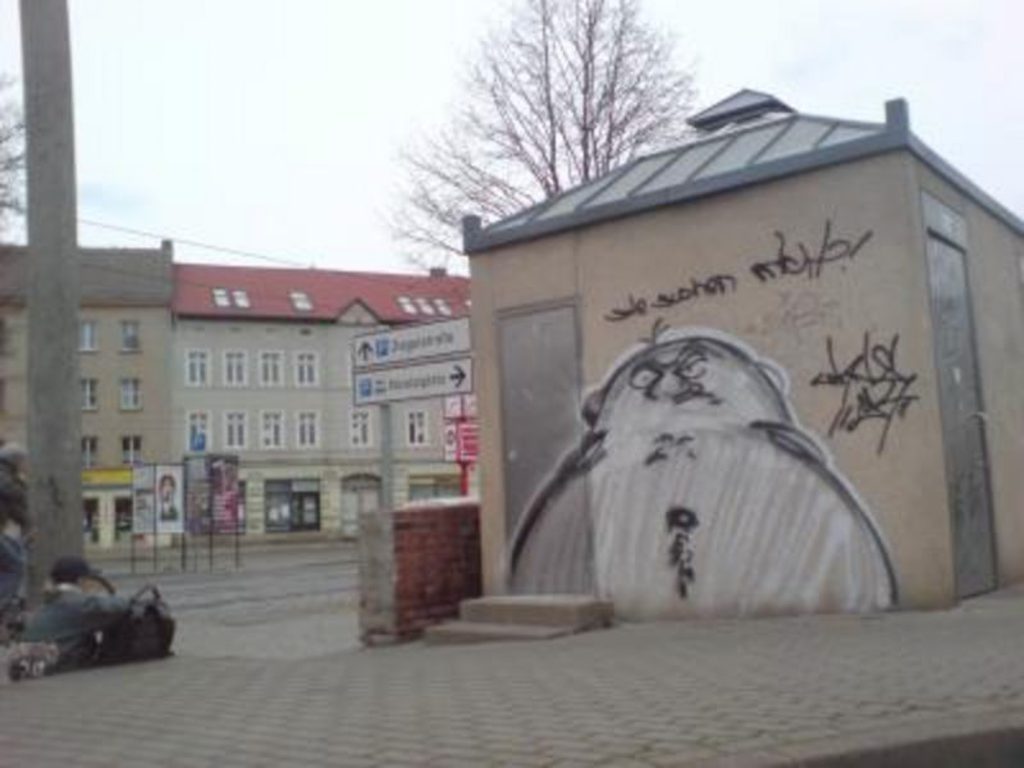
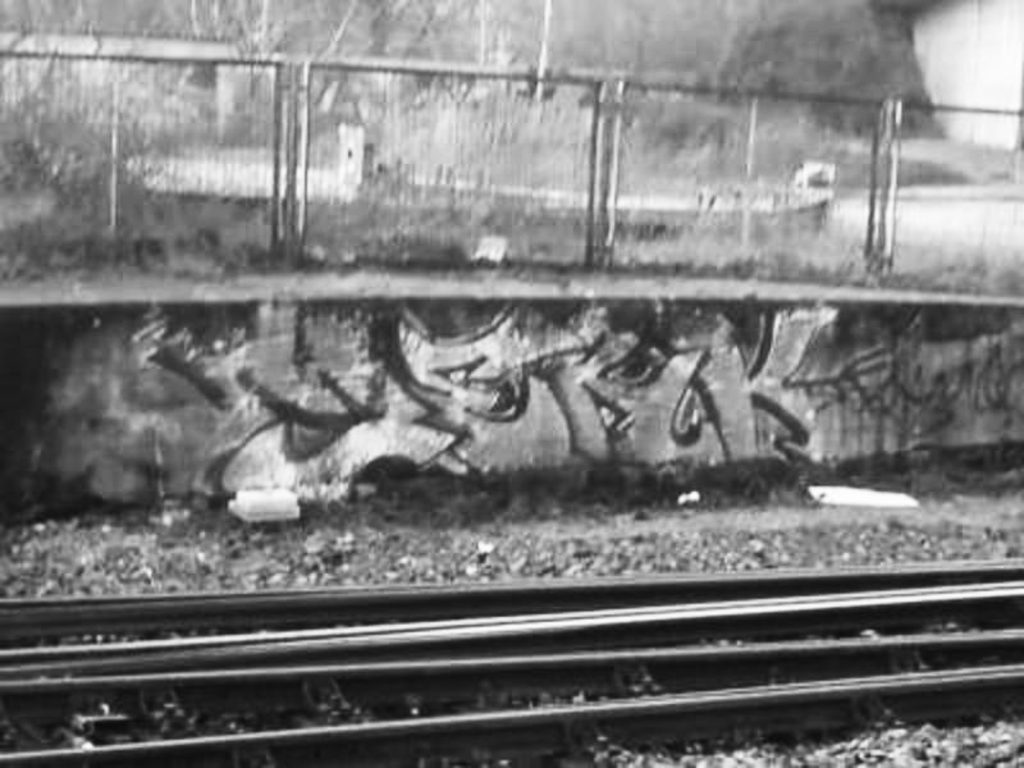
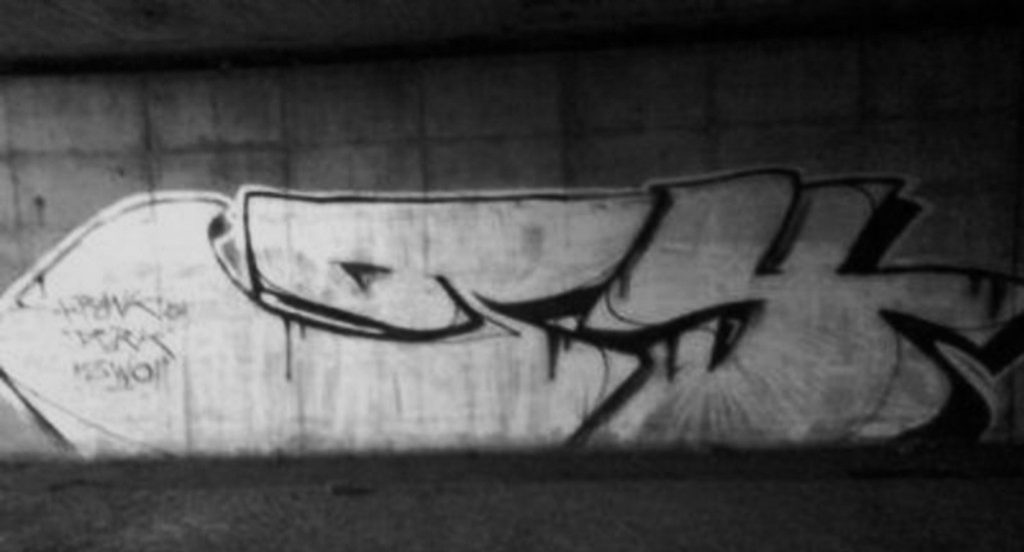
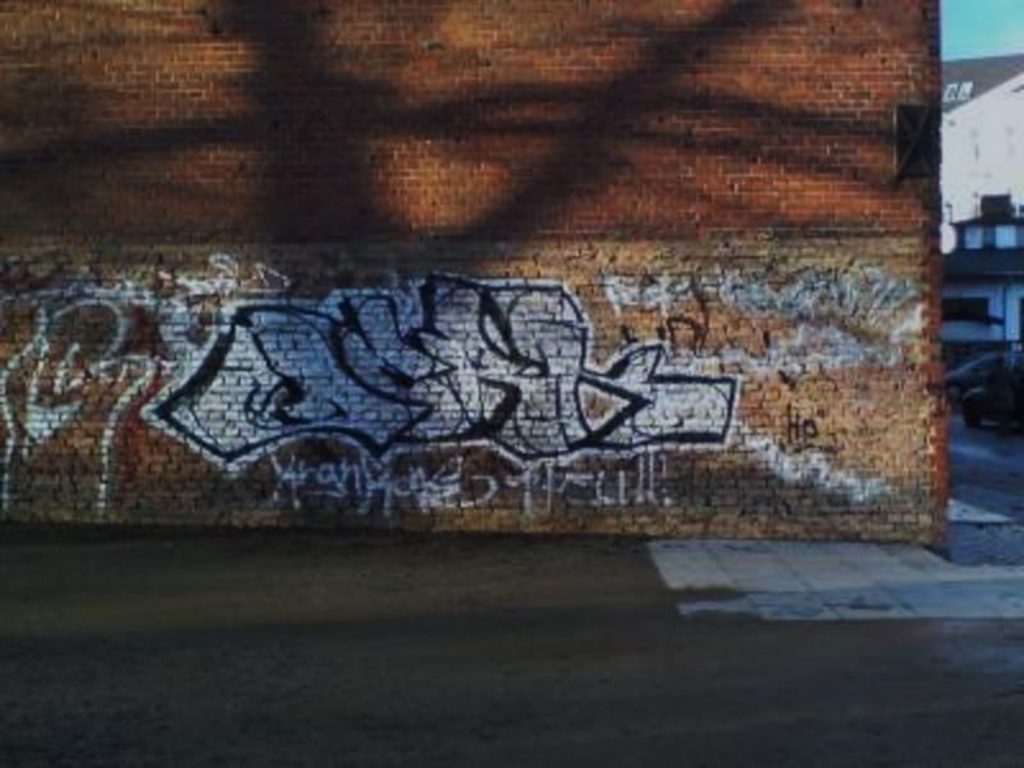
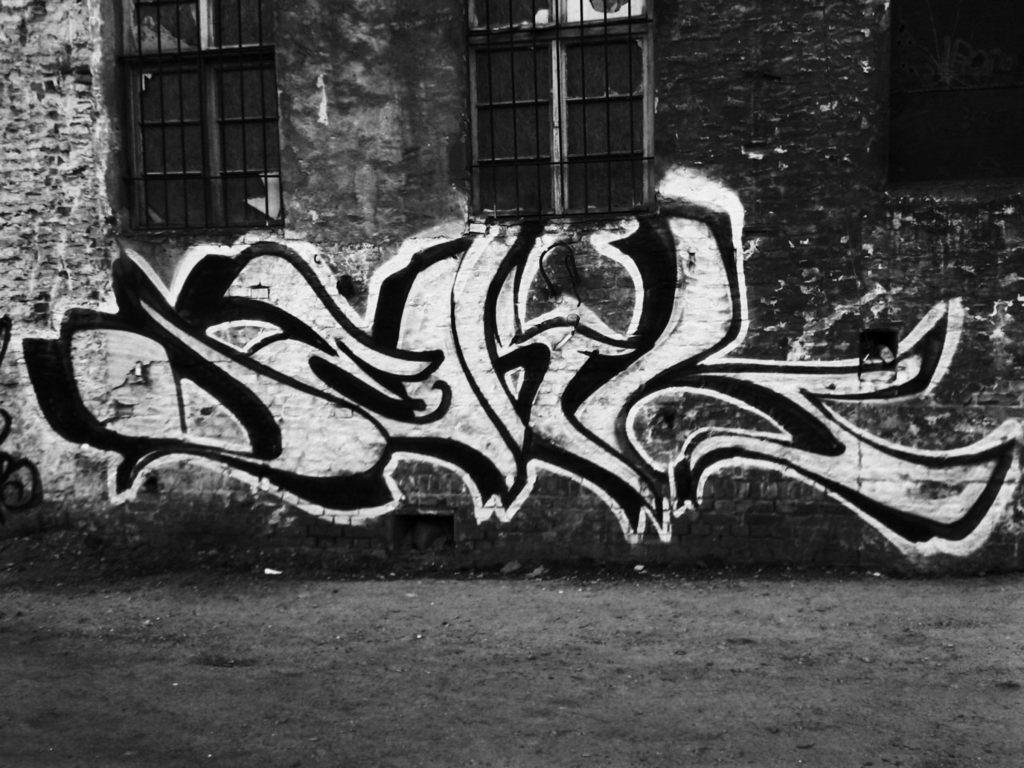
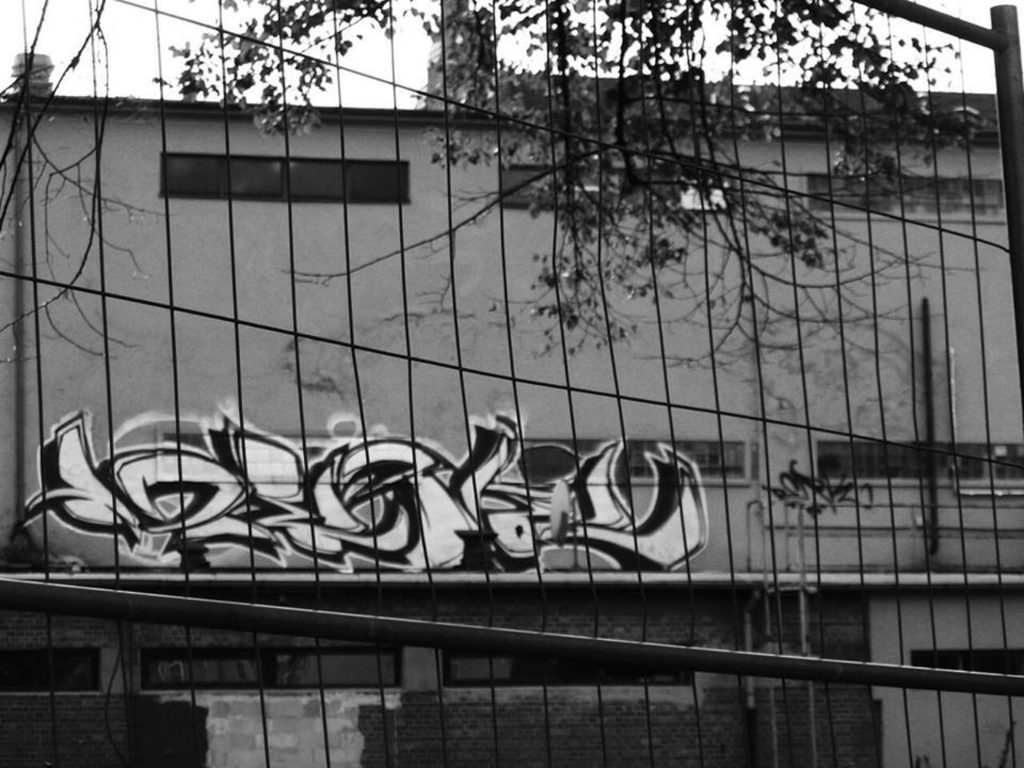
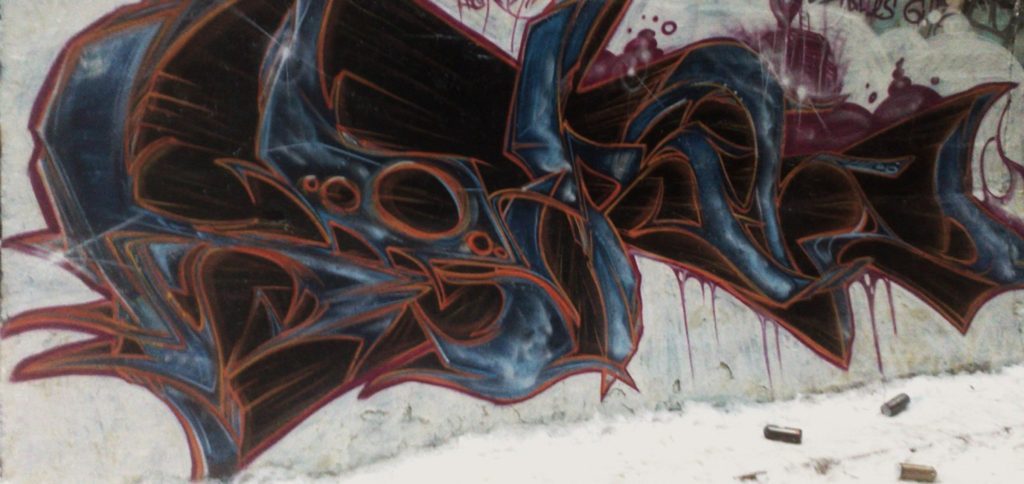
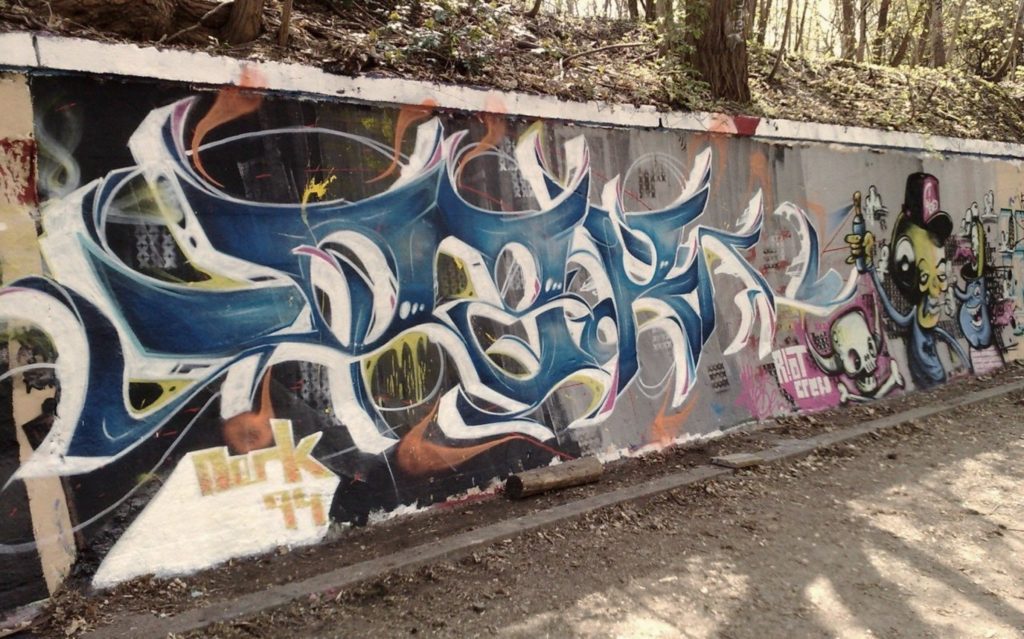
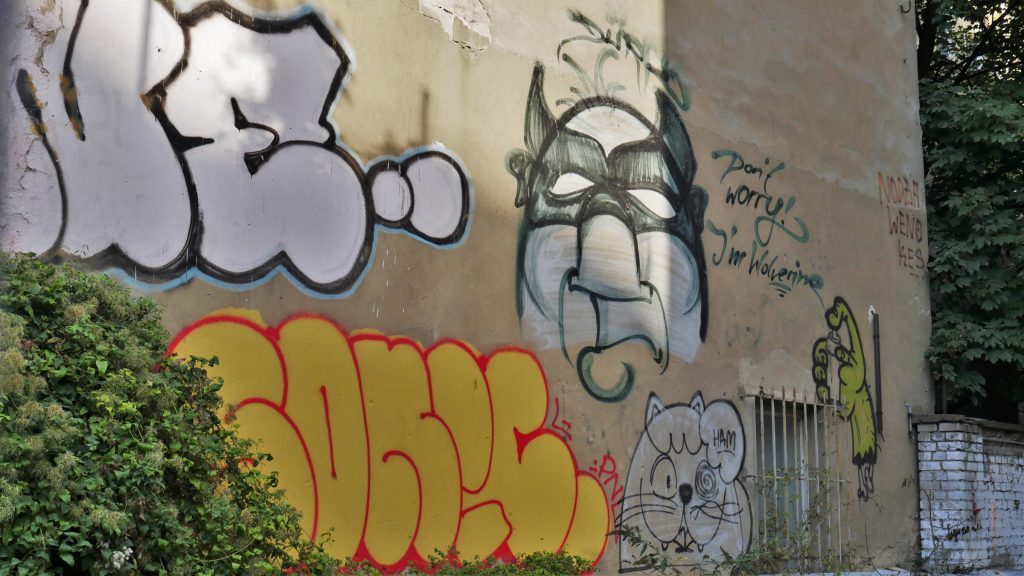
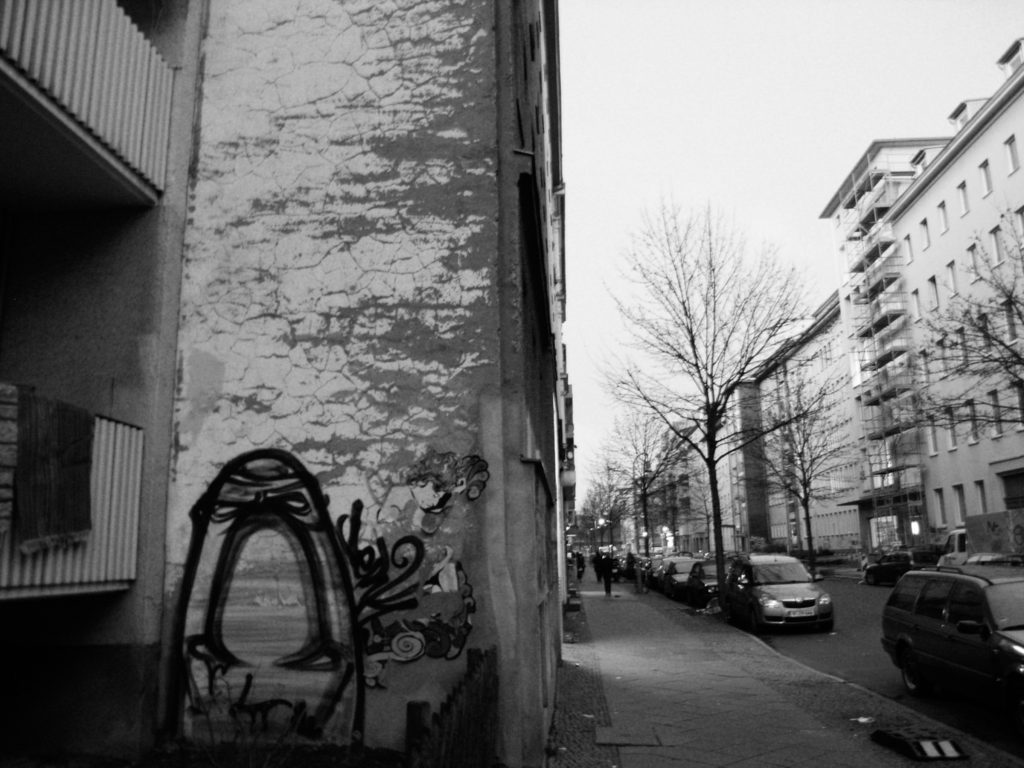
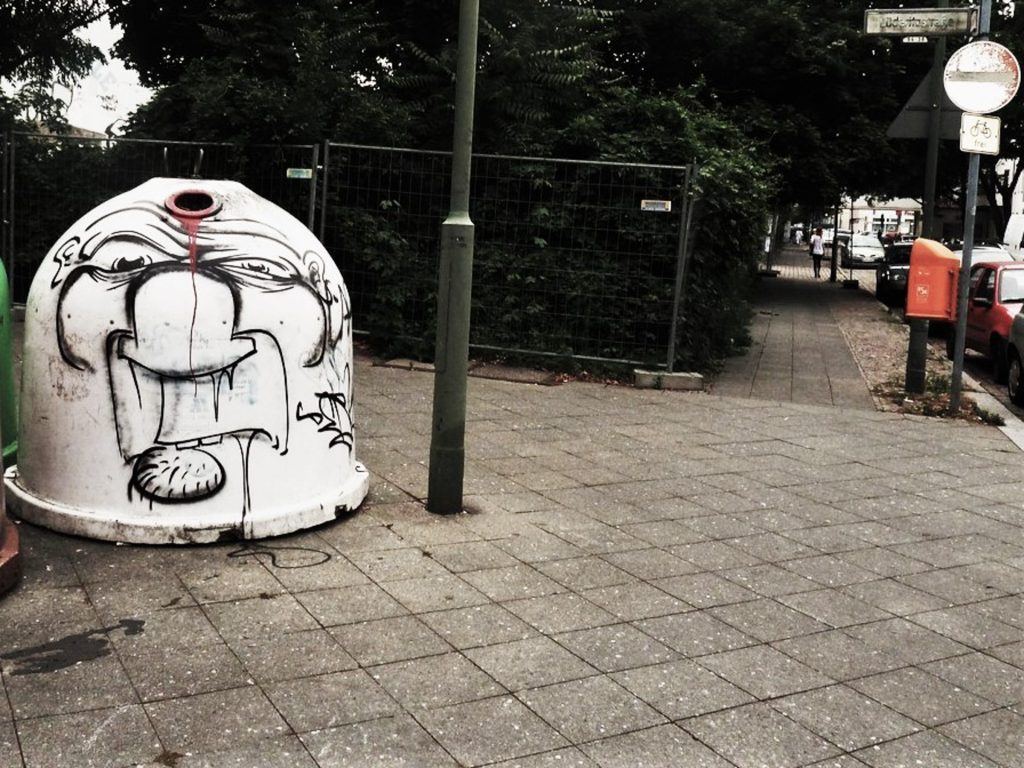
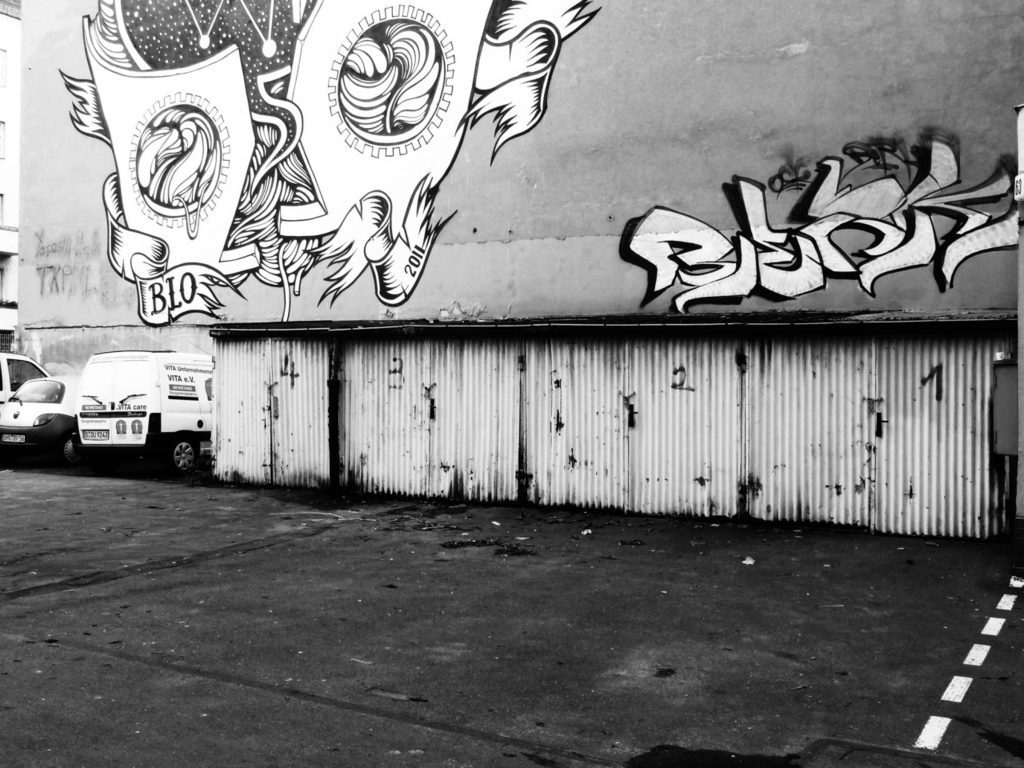
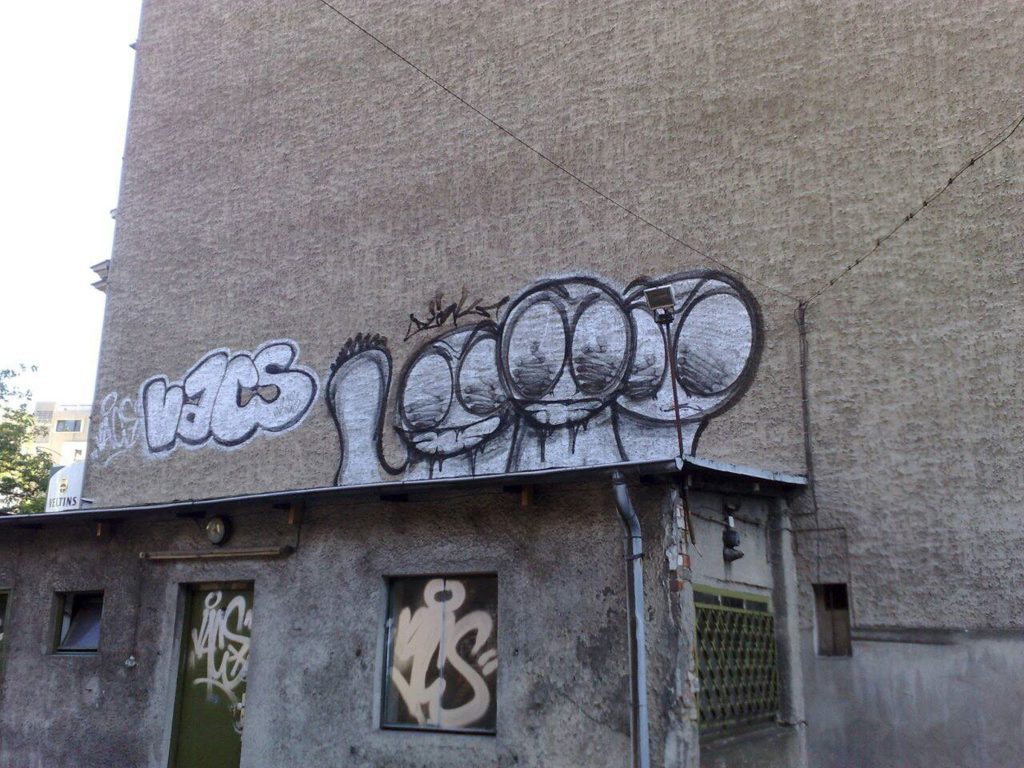
Where were you born and raised?
I was born in Brandenburg an der Havel. I grew up there and in a nearby village.
What influenced you during your youth?
Up to a certain age, life in the village was really great. I have vivid memories of endless summers spent at lakes and in nature. As the son of a teacher mother, the pressure to perform and thus also the frustration at school increased at some point. Combined with a largely absent father and increasing consumption of intoxicants, the urge to rebel was growing. Graffiti was probably a way to break out of something I didn’t fit into from an early age.
Did you draw as a child?
As a child, I spent a lot of time copying comic book characters. Together with a friend, I once founded a ‘Dragon Ball Art Club’. It even had an entrance exam and its own, self-designed business cards.
Were you a fan of comics and cartoons?
I was addicted to cartoons on television. Sunday mornings with Bugs Bunny and the Road Runner were sacred.
What kind of music did you listen to as a teenager?
I think before I listened to rap, hip hop, for years, I listened to more rock stuff. As a teenager, it was always a mixture of rock and rap.
Did you use to go out spraying on your own or with others?
Before I moved to Berlin, I was usually out and about with others at night. Here in Berlin, I was alone 90% of the time.
What interested you about letters?
My interest in letters probably came from looking at other graffiti pieces.
Which writers inspired you in the beginning?
In the beginning, I was inspired by the locals in my city. At first, I was inspired by the locals in my city. Then, at some point, other sources of inspiration came along through magazines such as Backspin. I was also extremely enthusiastic about POET from Berlin.
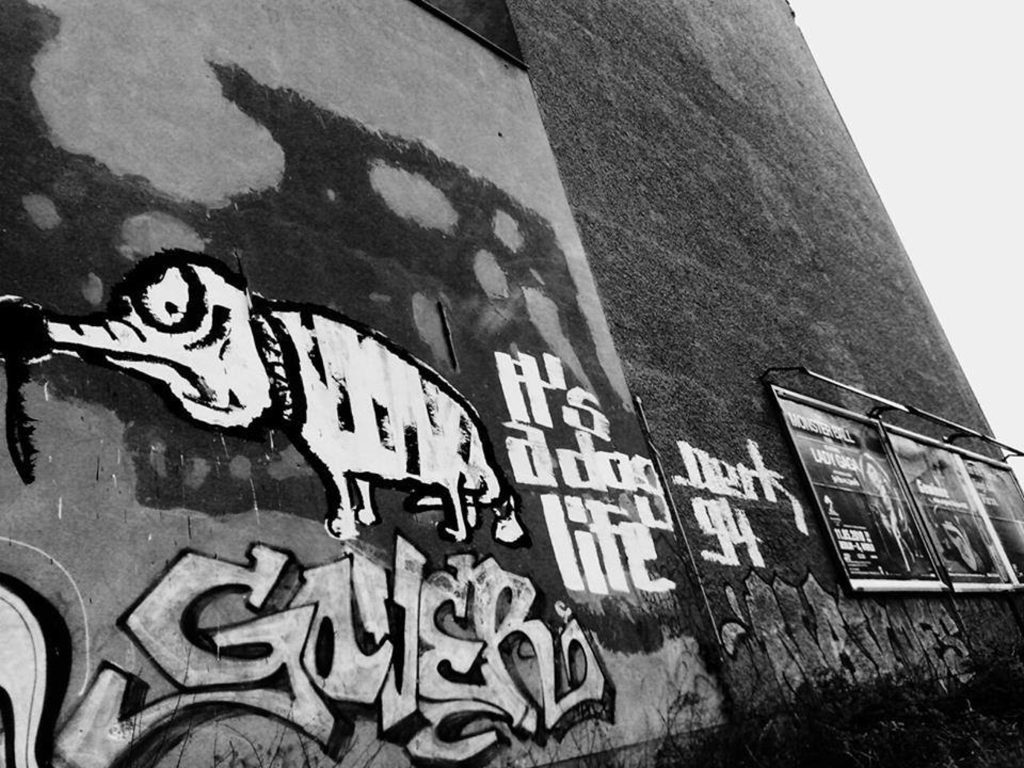
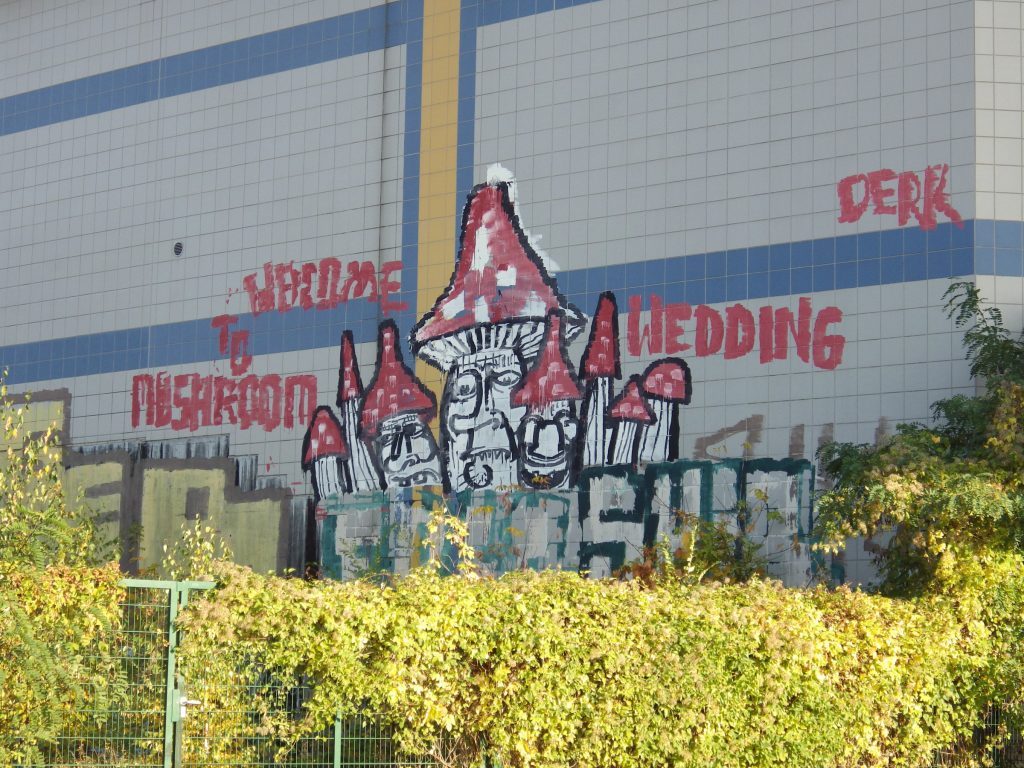
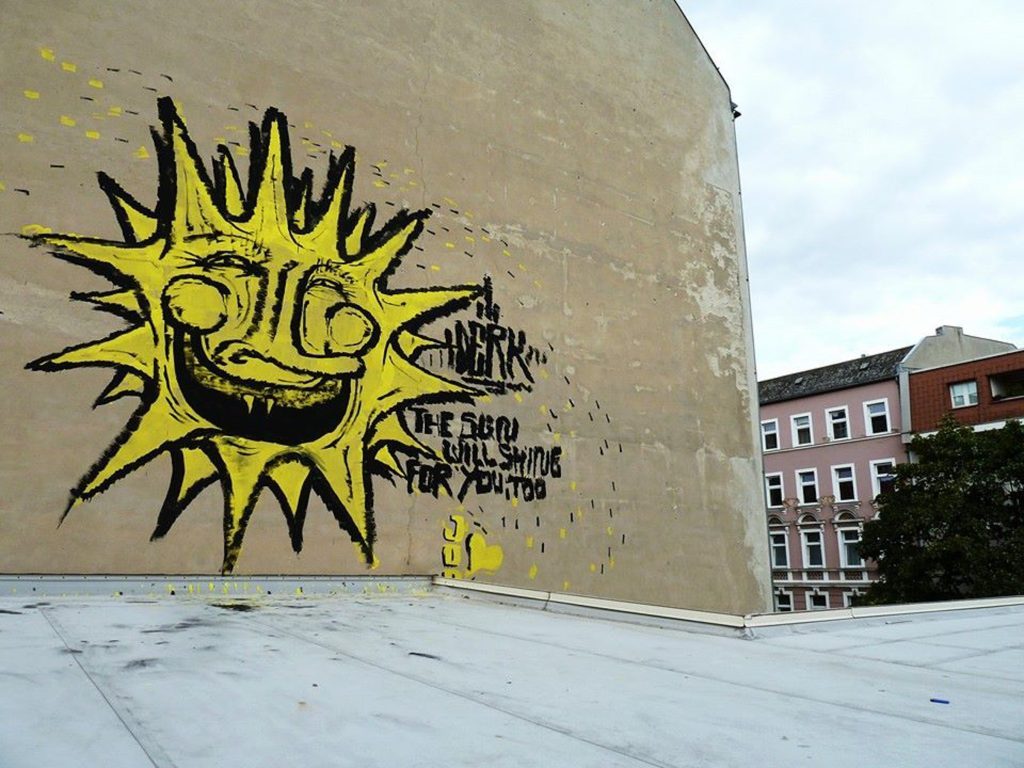
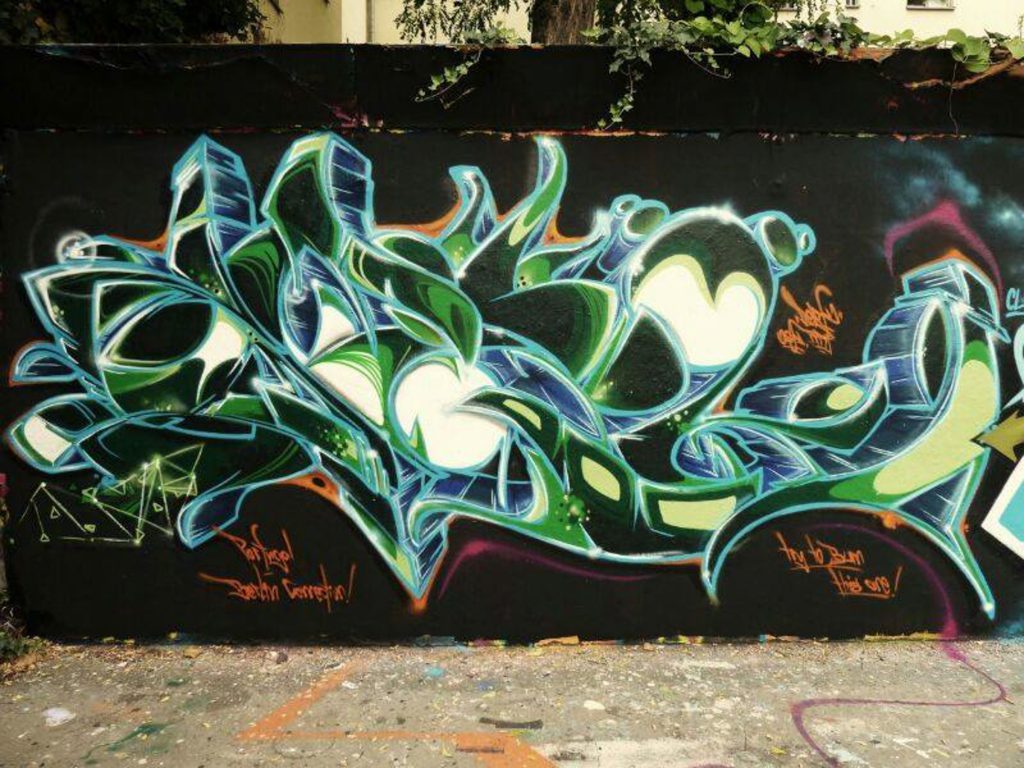
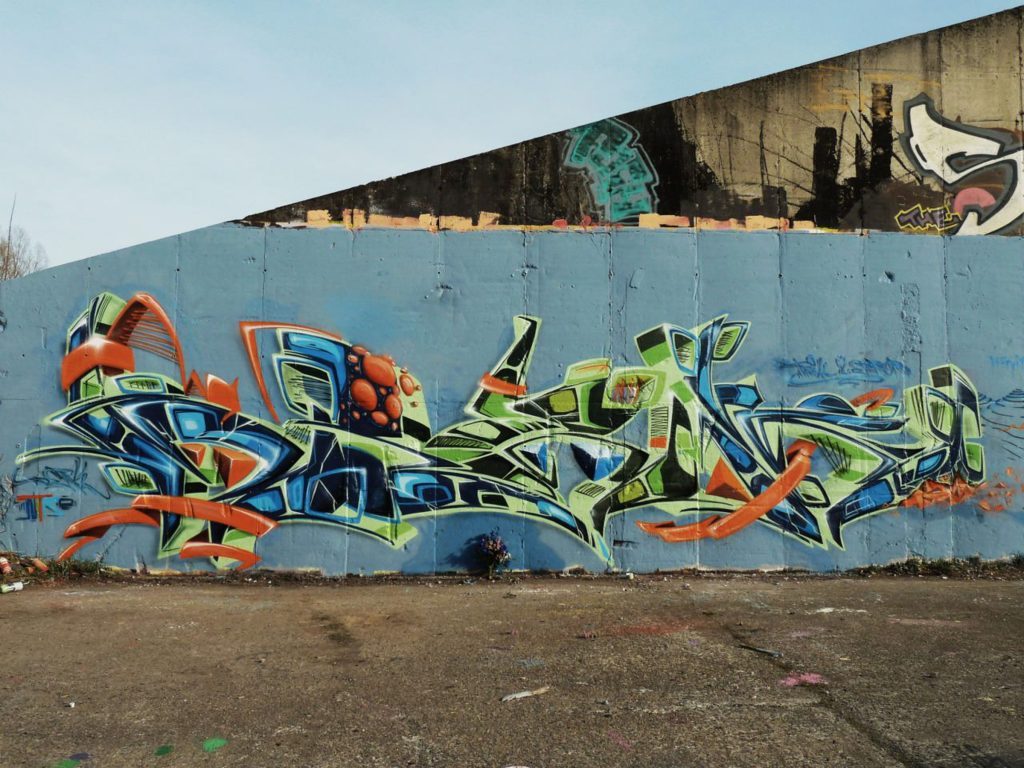
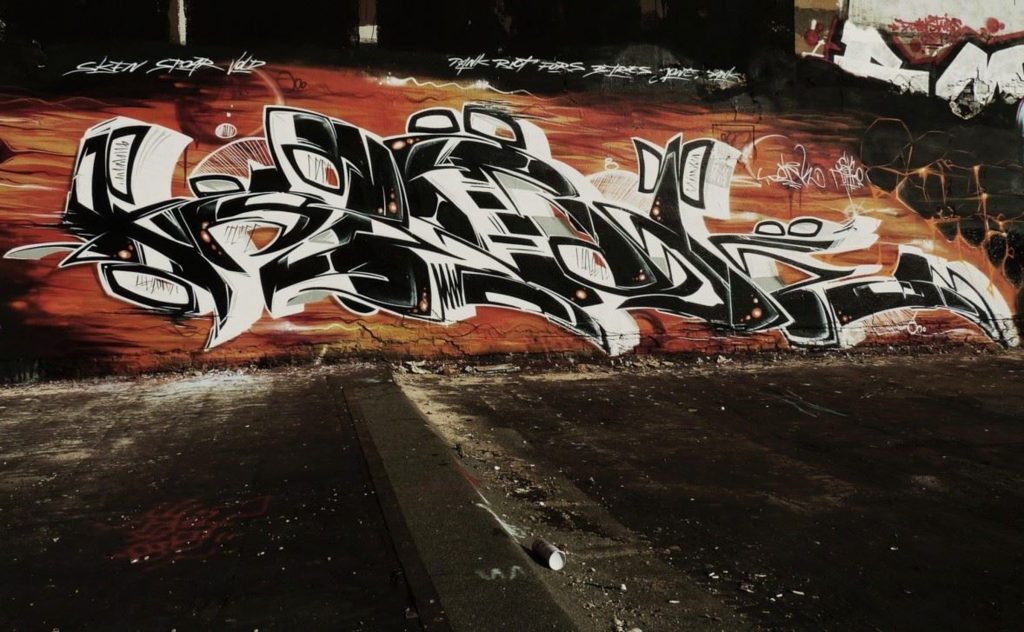
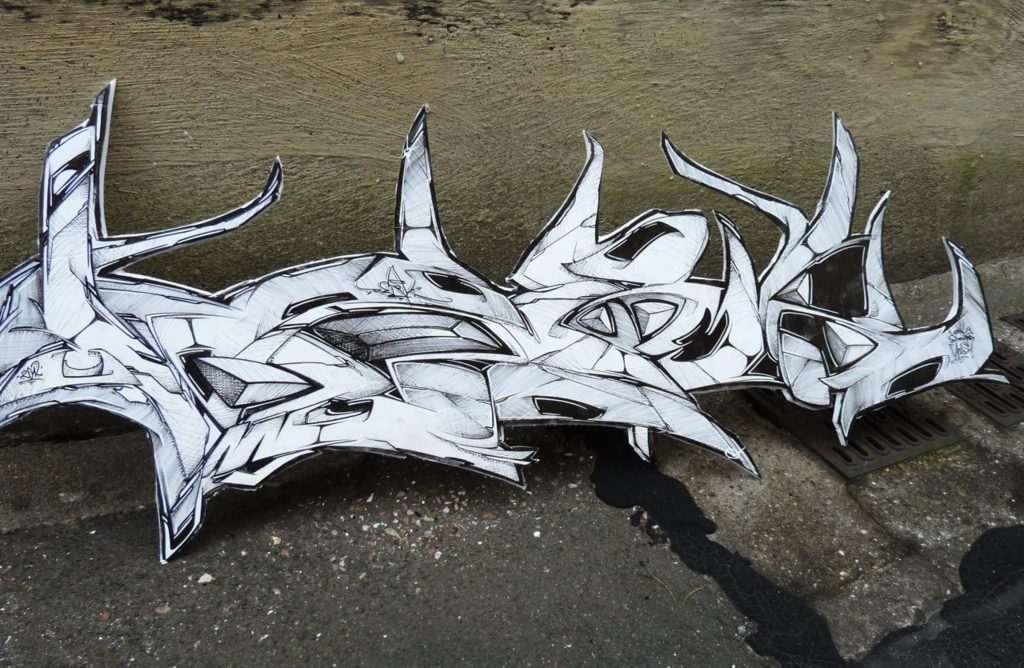
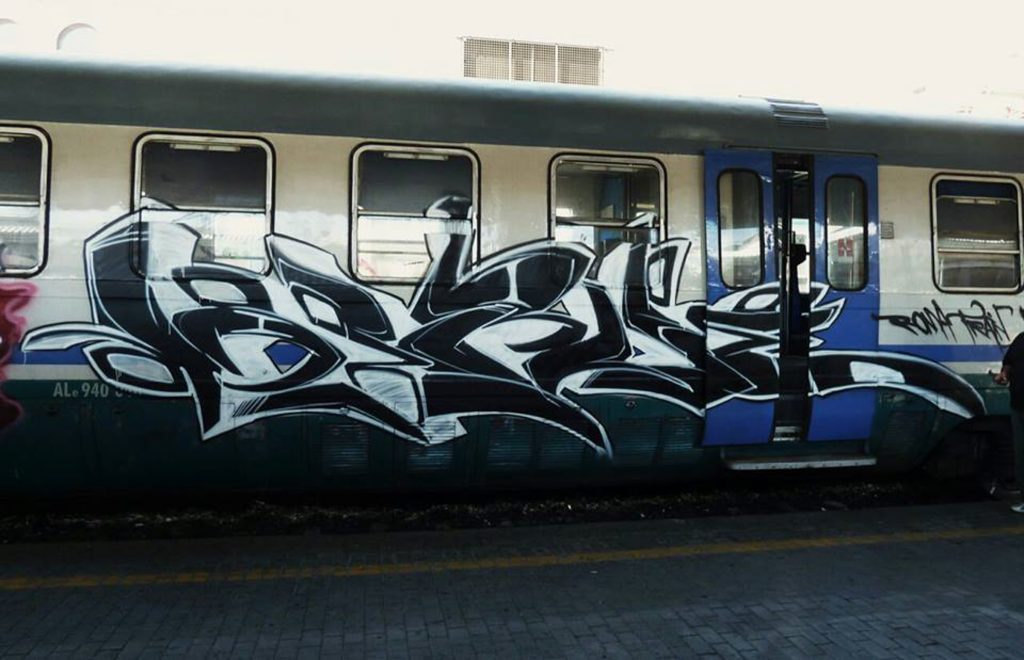
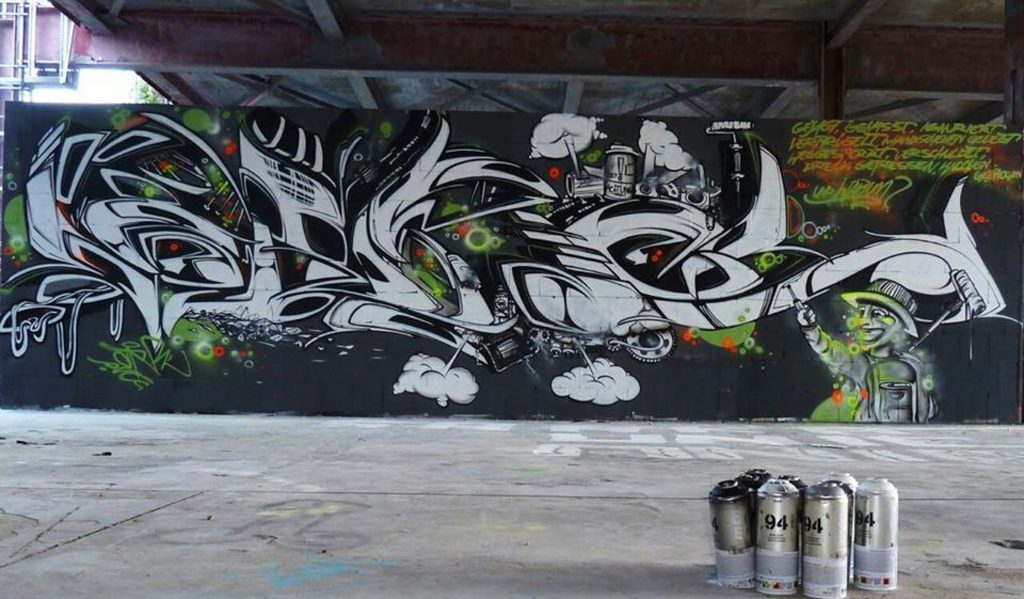
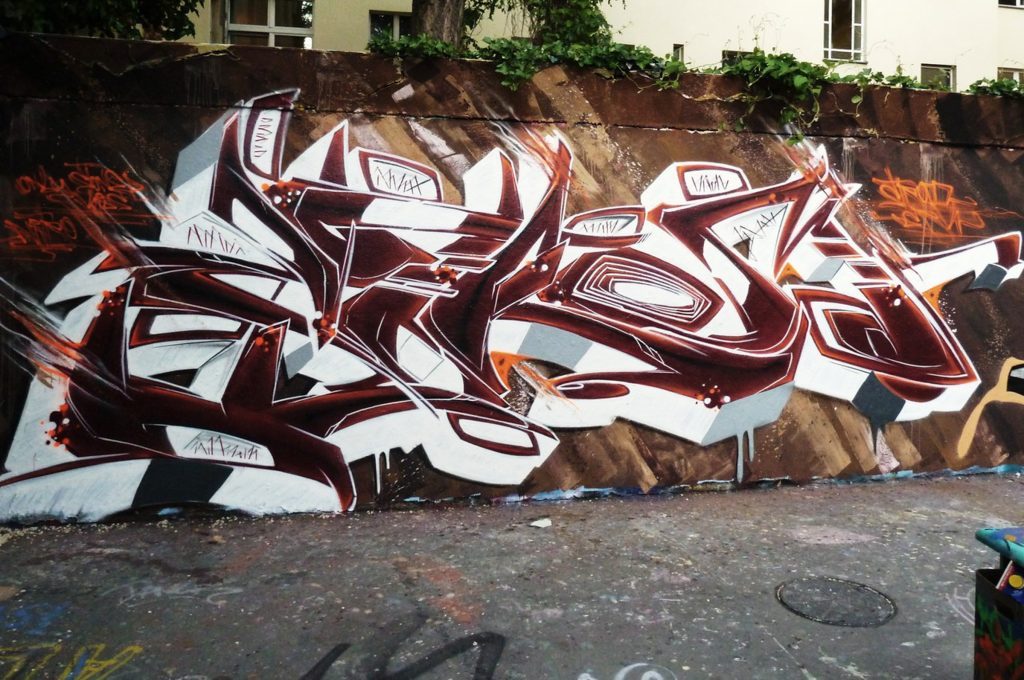
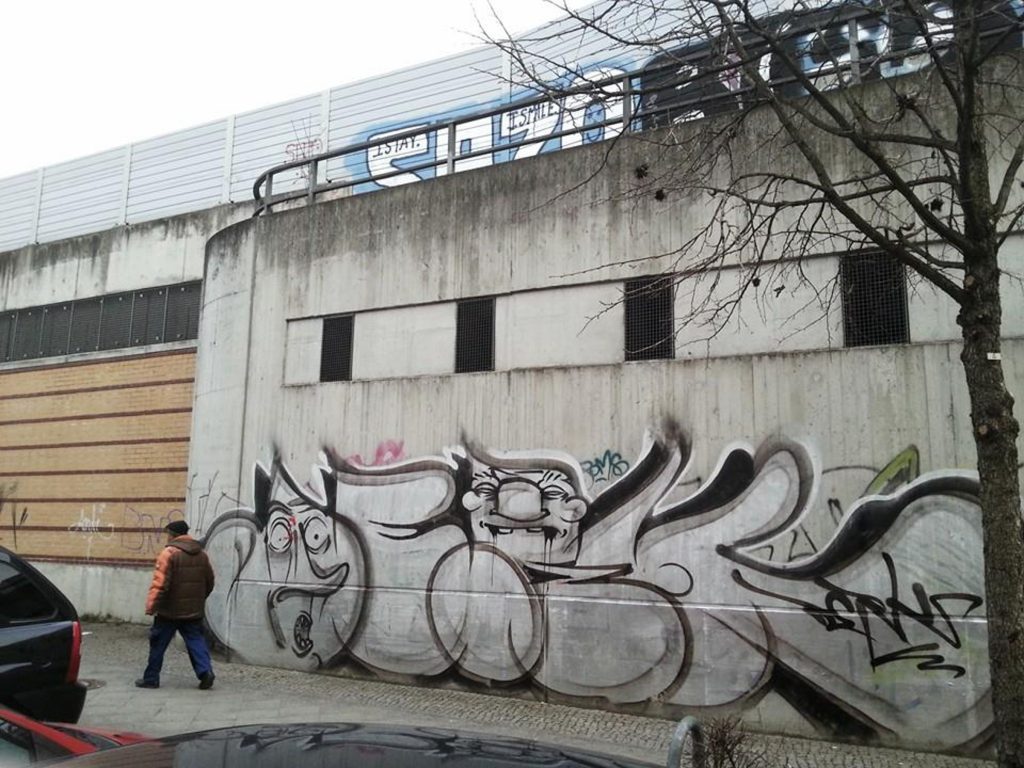
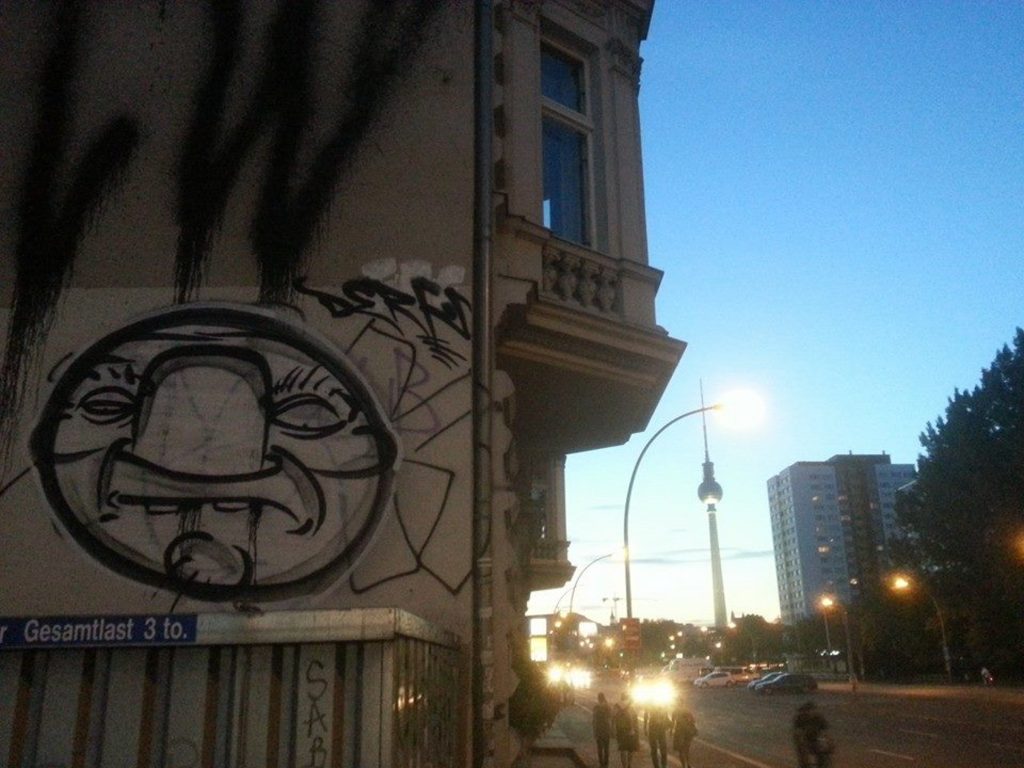
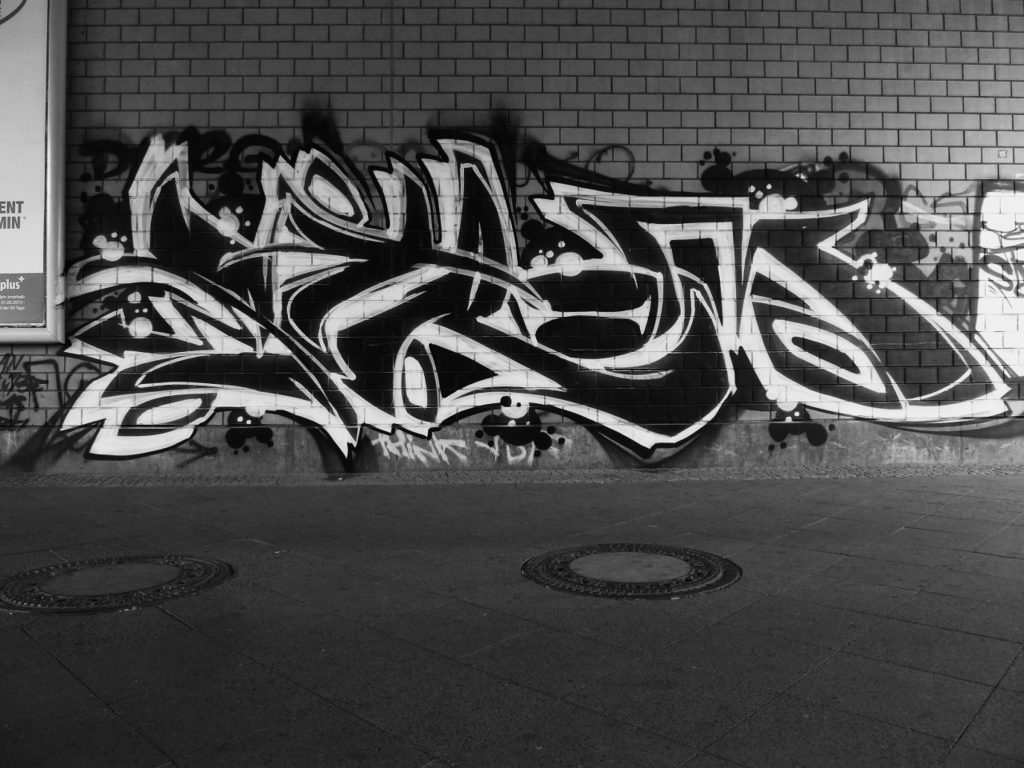
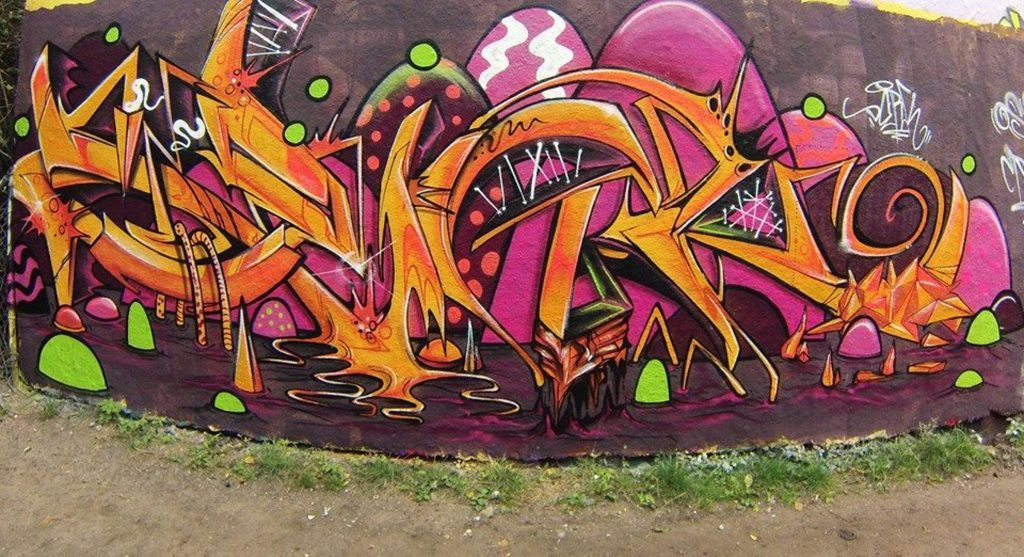
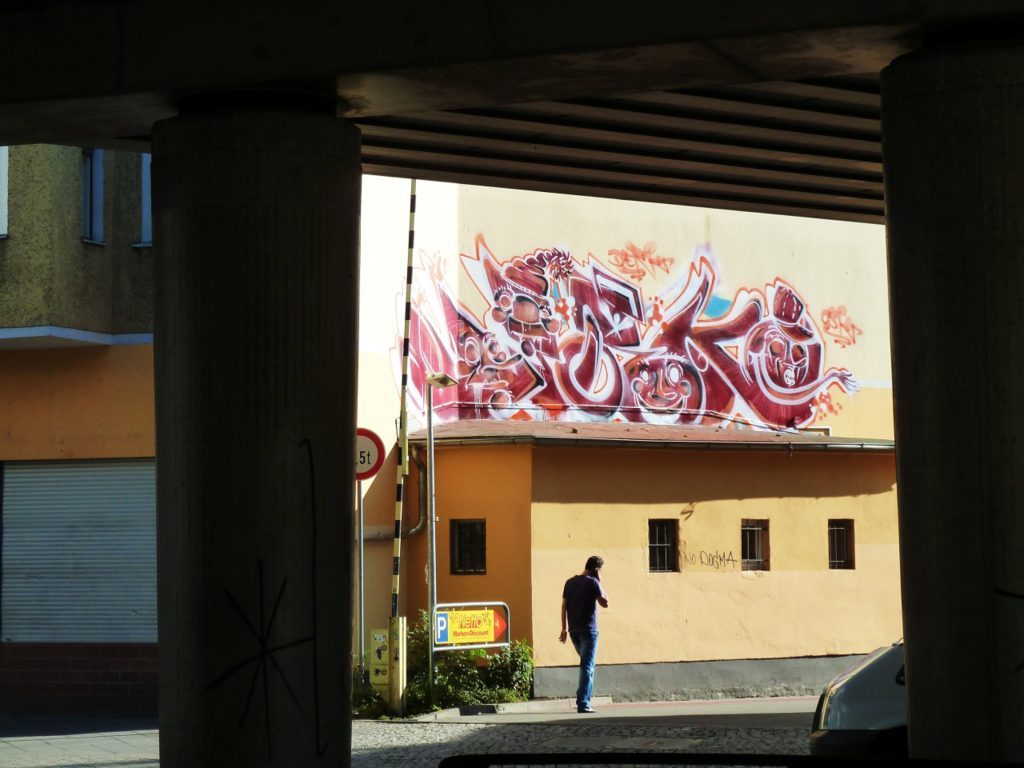
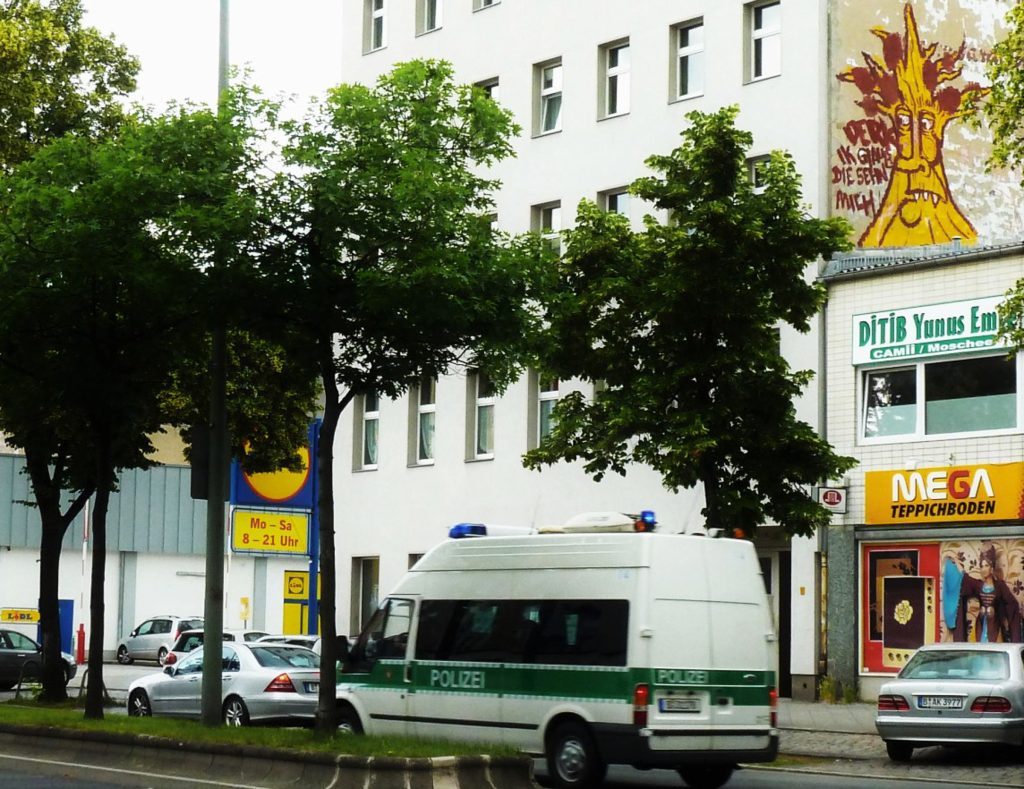
Your style was lively and sometimes complex, like Wild Style. Looking back, how would you describe your lettering style?
In terms of style, I always wanted it to be as dynamic, energetic and somewhat aggressive as possible. When spraying, the movements and swings should always feel a bit like martial arts.
When did you stop using letters altogether and why?
I think I painted my last style in 2022. It happened quite naturally. Since then, I’ve just lost interest in it.
How did you come up with your creatures? Your style is very recognisable. Did you have any role models?
I’ve always found characters interesting. When I still lived in the suburbs and occasionally took the train to Berlin, I was particularly struck by the many KRIPOE fists. When I moved to Berlin, I was completely fascinated by the characters of BÖREK. I would say that he has had the greatest influence on my current work.
I came up with the sun because I deliberately thought about which symbol could later function as a kind of trademark. I thought about children’s drawings and how children (like I used to) often draw a sun in the upper corner of the picture. My thought was whether it might be cool to take these suns out of that context and put them in a different one.
Are there any figurative painters who inspire you?
At the moment, I’m really into the work of the painter Dana Schutz…
When did you start calling yourself Sonne im Schacht (sun in the shaft)?
I think the name ‘Sonne im Schacht’ came about in 2017, when I was spending more and more time in underground passages.
Did you start out painting your characters with spray paint?
Yes, I started out with spray paint.
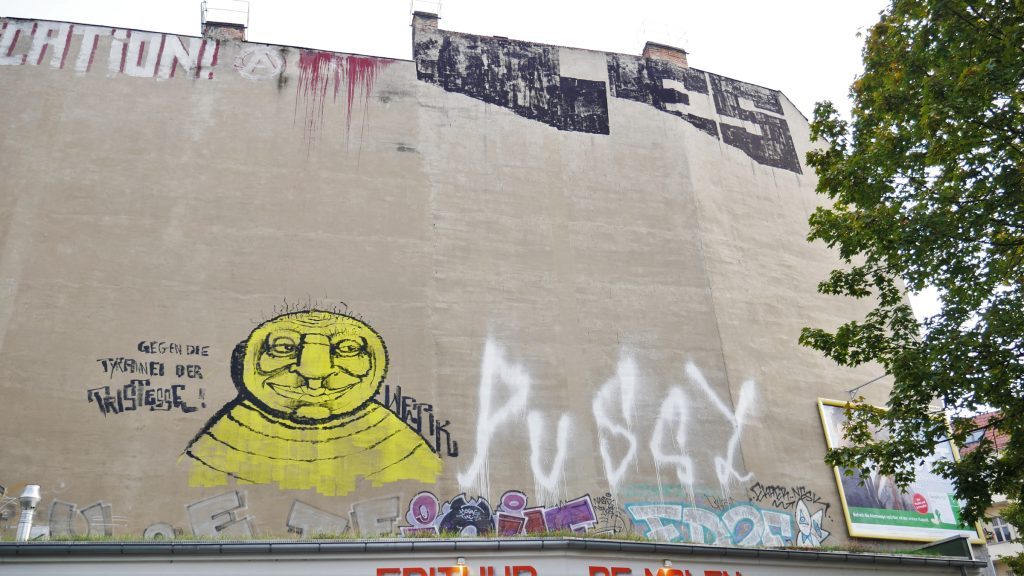
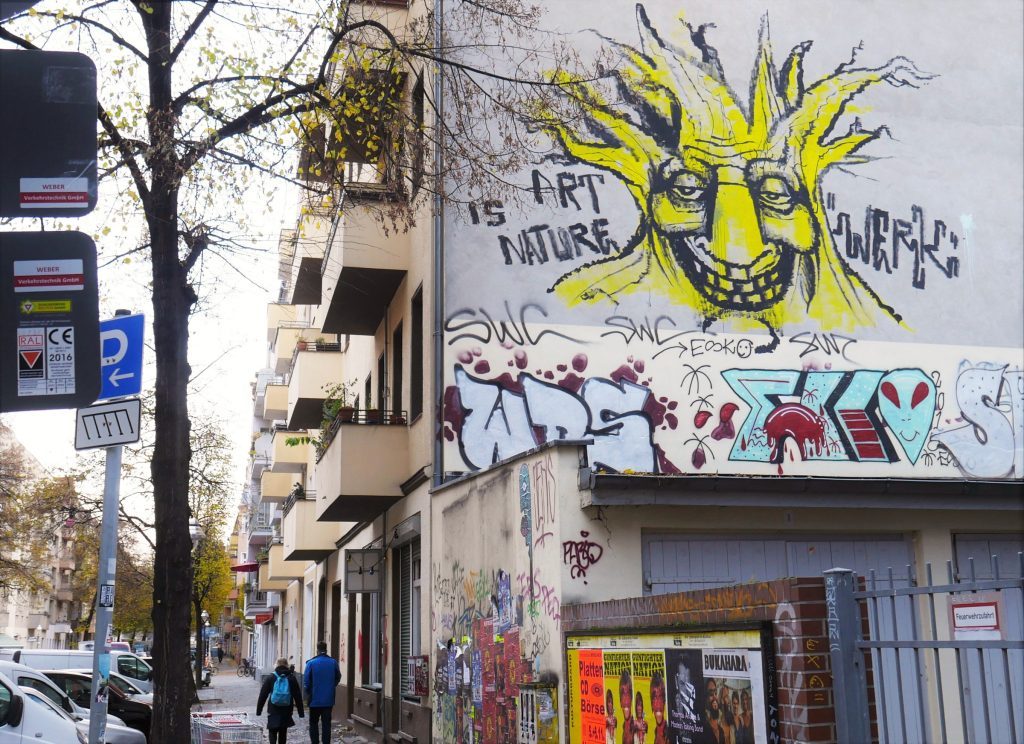
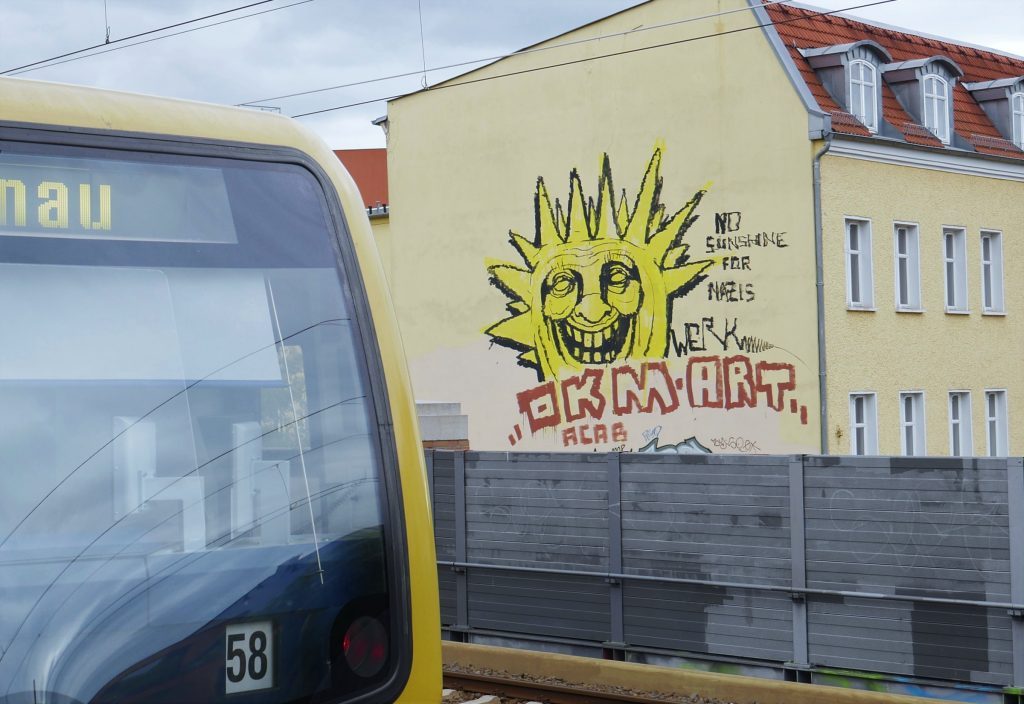
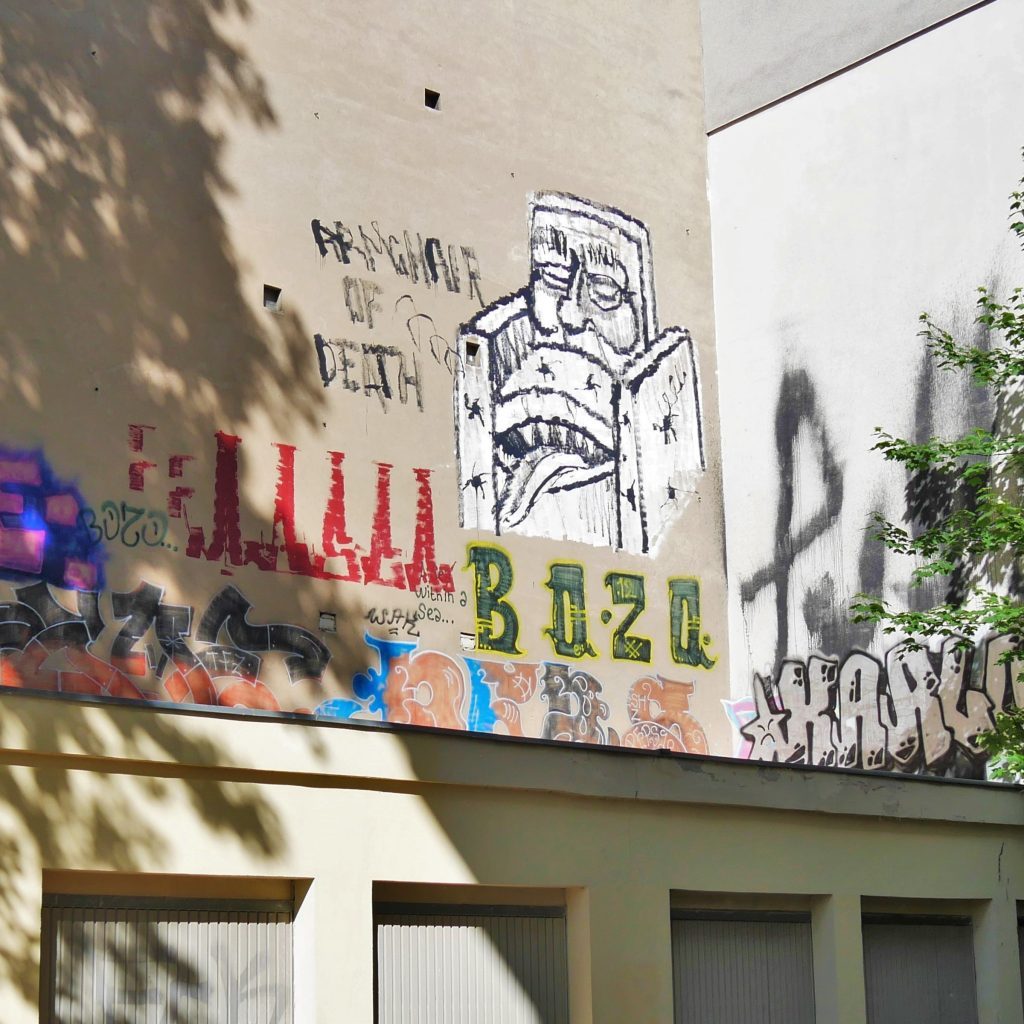
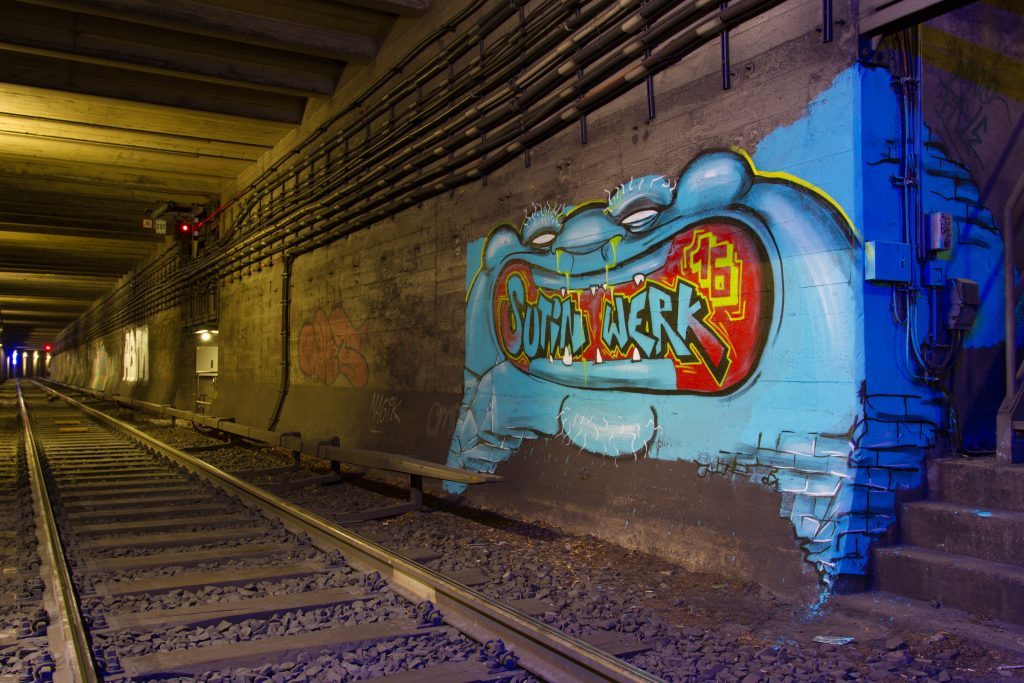
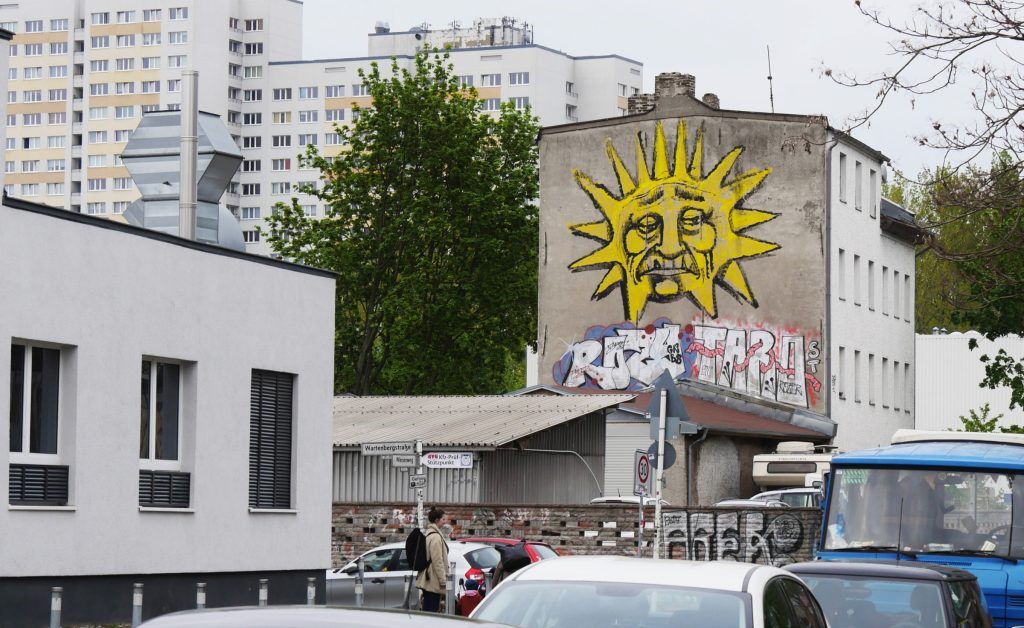
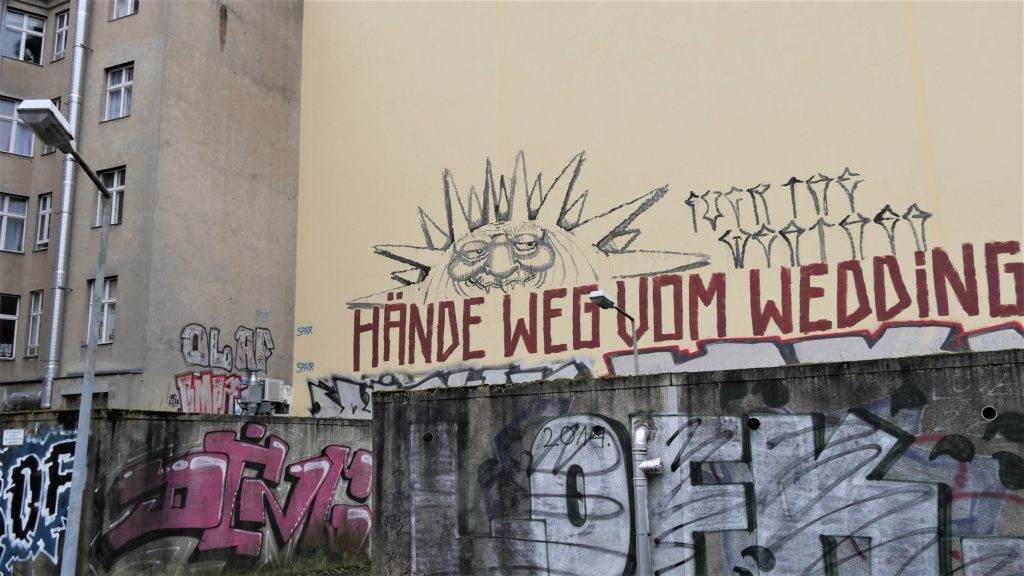
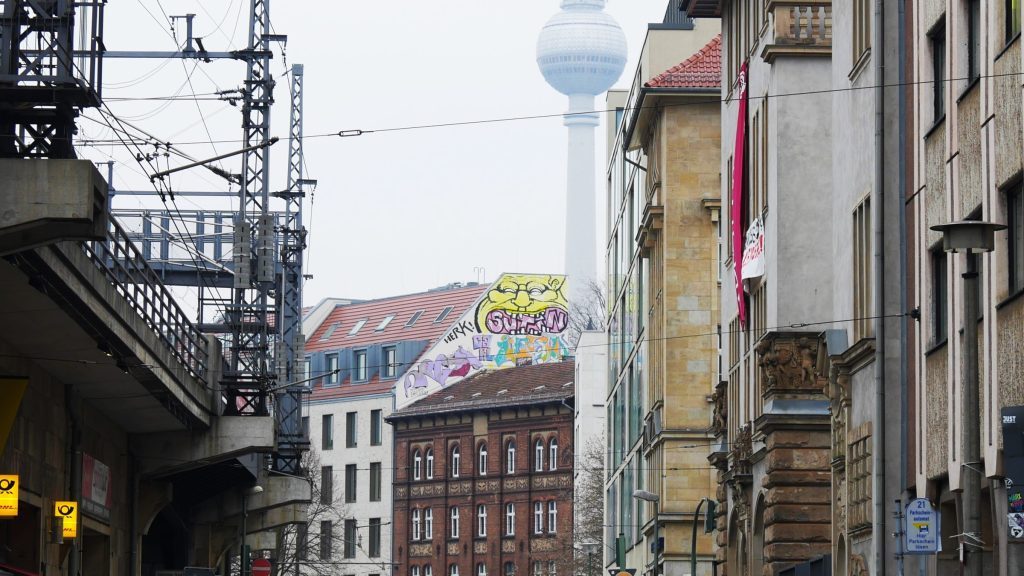
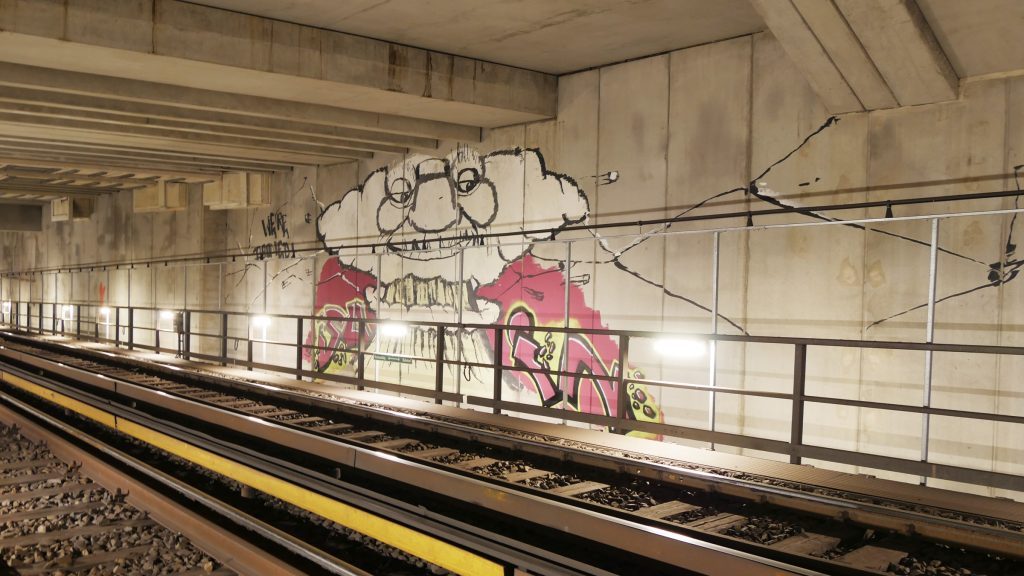
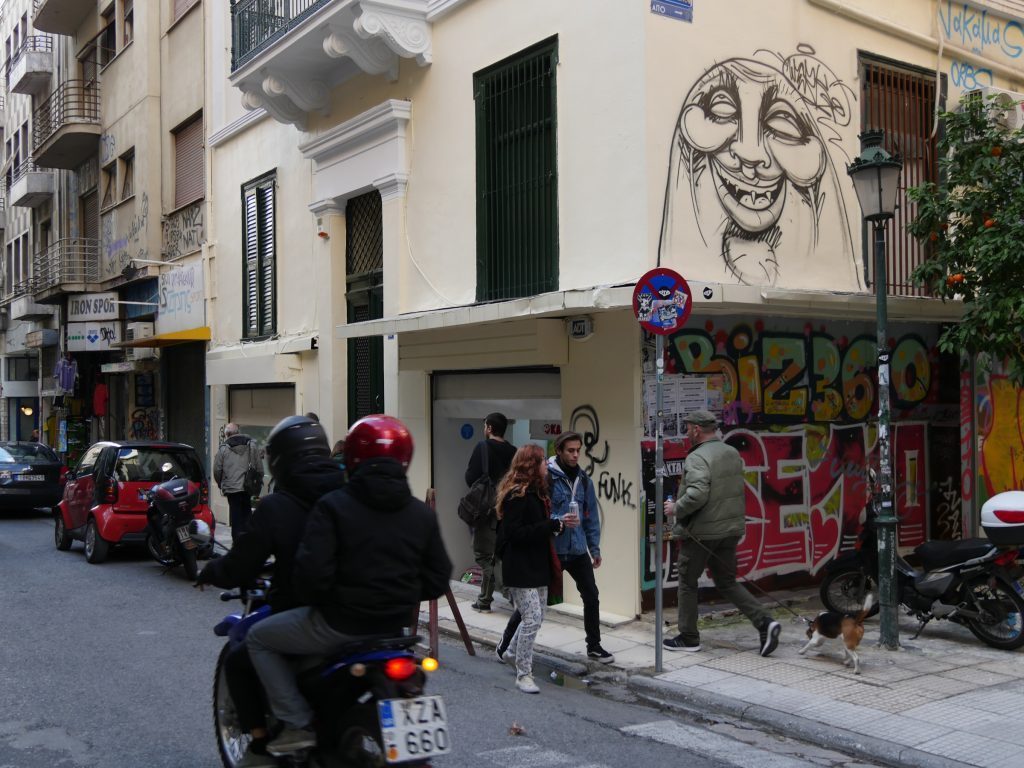
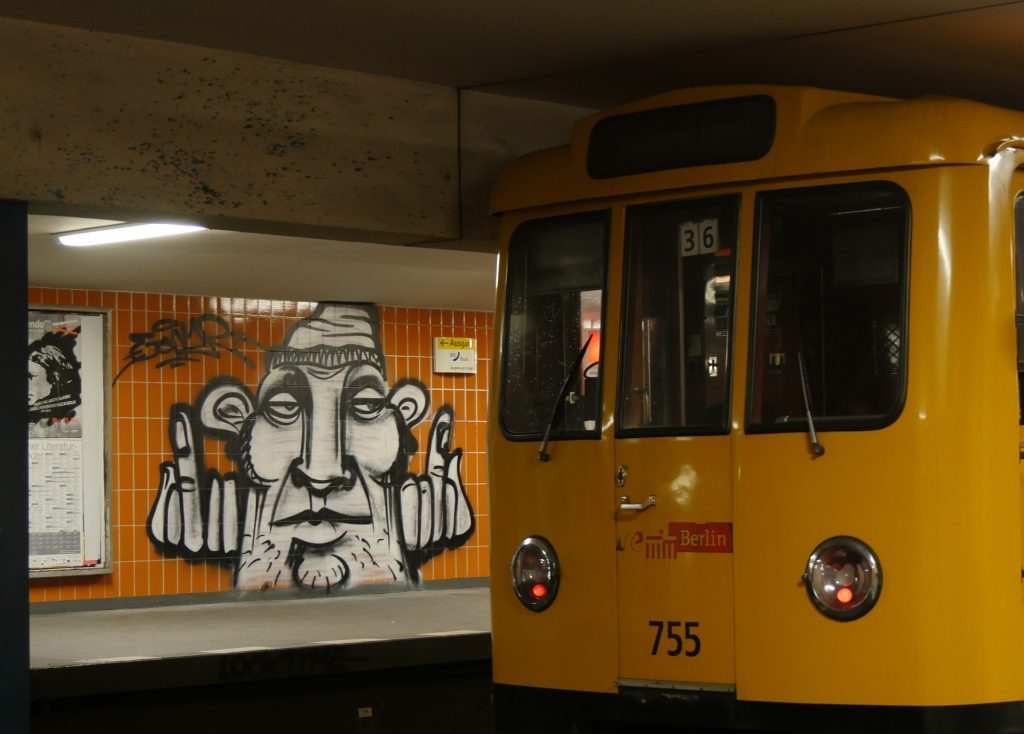
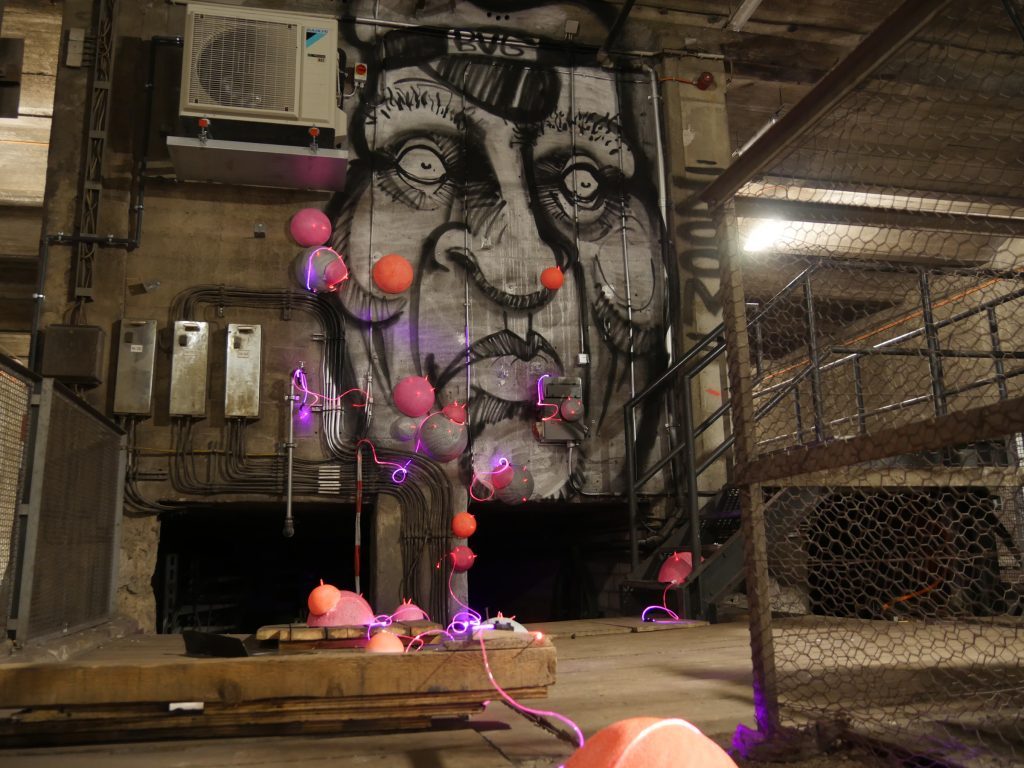
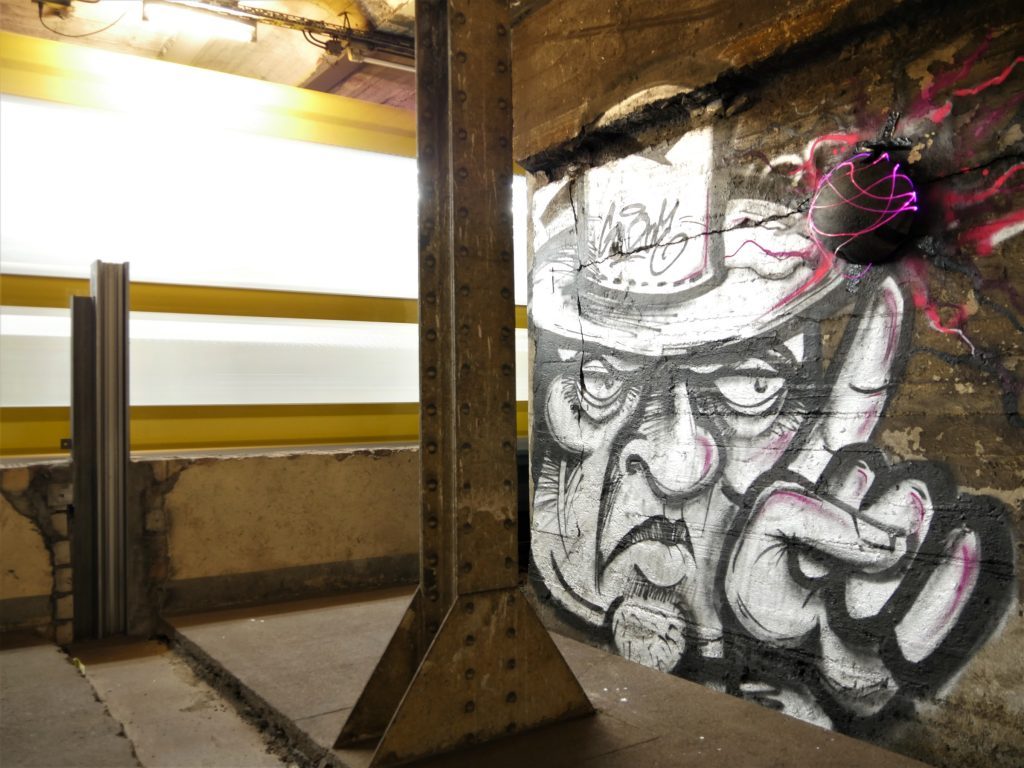
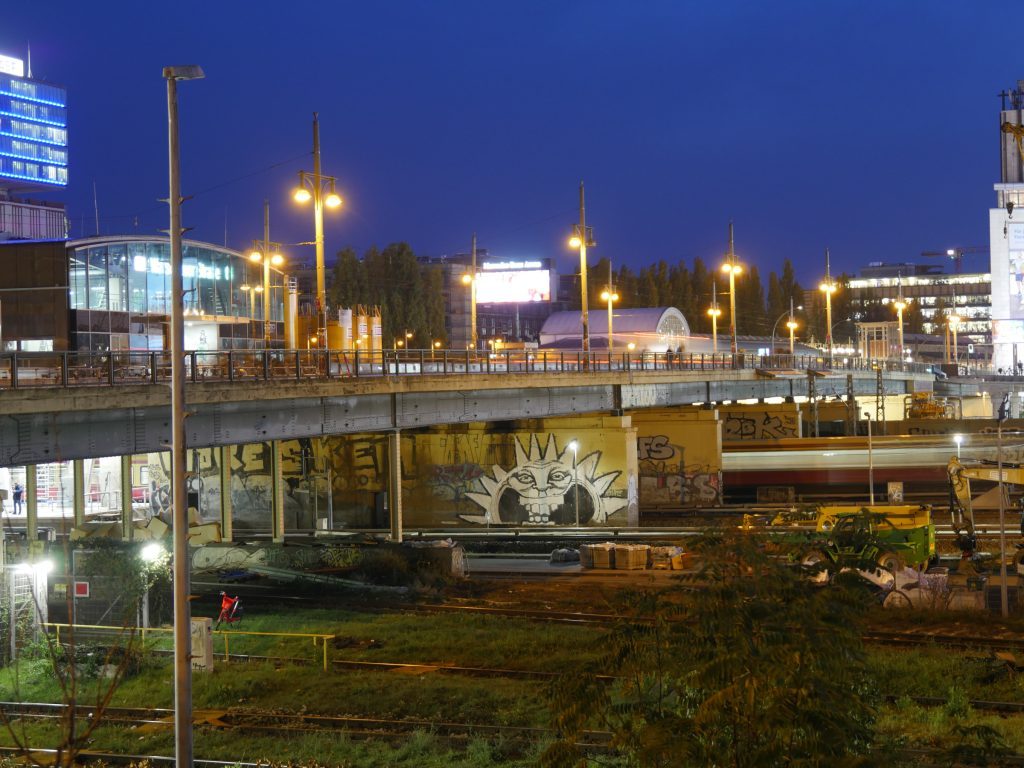
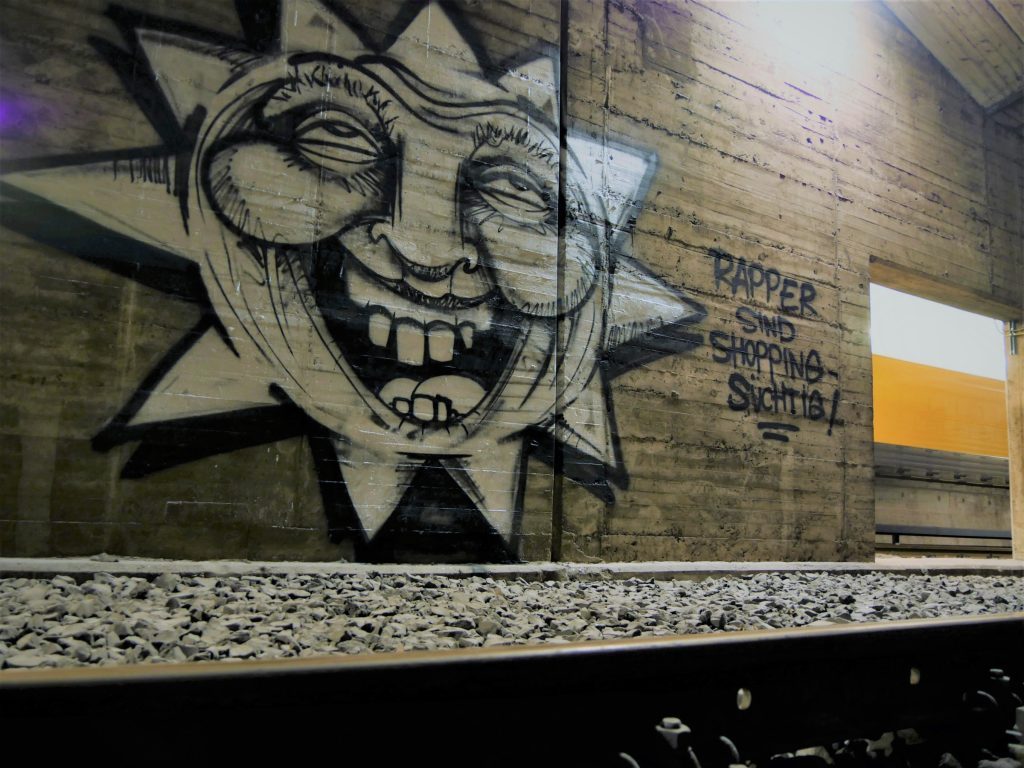
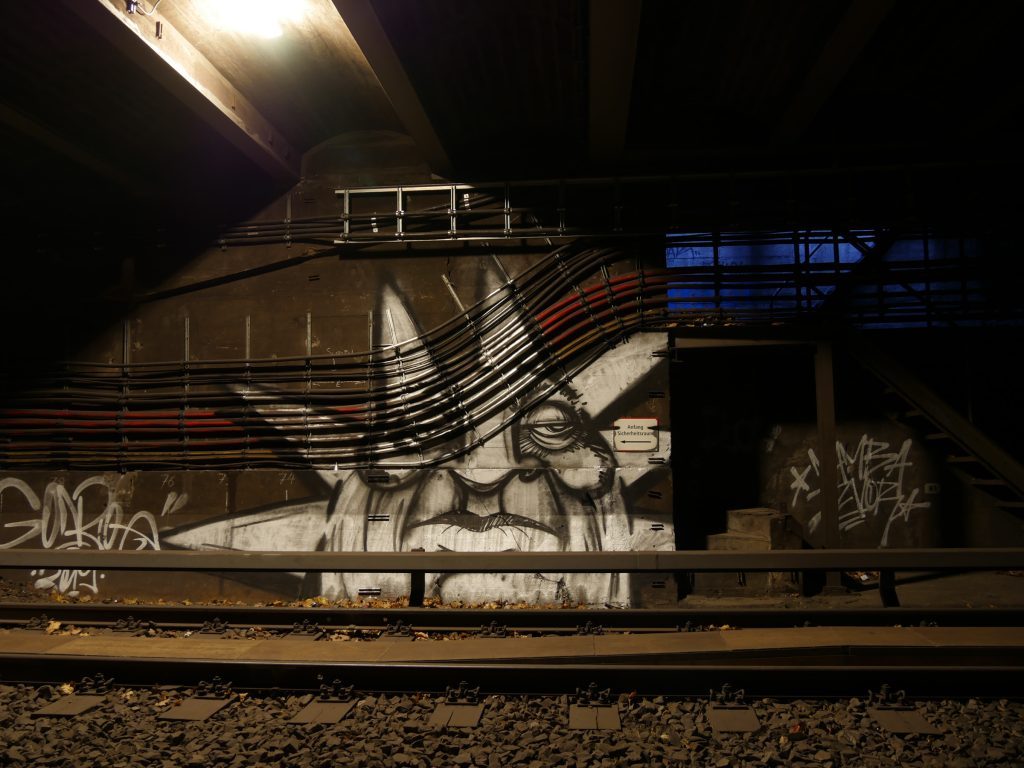
When did you start painting with rollers and brushes, and why?
I think the first large picture I painted with a paint roller and brush was in 2011. What particularly fascinated me about the technology was that the images could still be seen from hundreds of metres away, opening up a whole host of new possibilities.
Why did you decide on black and white motifs and leave out colour?
Some of my works are painted with colour. The first painted images were initially yellow. Black and white then resulted from working with spray cans, as nothing covers better and no contrast is more clearly perceptible than chrome and black.
How do you decide on a new motif for a spot?
The choice of motif is either spontaneous and freestyle or planned in advance. I would say that the more interesting the spot, the more I think about the motif beforehand. With the fire pot image on a rooftop, for example, I thought it would be cool if it looked like a Molotov cocktail flying towards Potsdamer Platz. But sometimes I sketch motifs in advance and then have to find a spot for them.
Do you draw the creature on paper before painting it on a wall?
I could probably draw a spiked sun even blindfolded, but as soon as new elements or motifs need to be incorporated, I naturally have to sketch them out on paper a few times first.
Do you draw/sketch often?
Thanks to tattooing, I’m drawing very regularly again.
Over the years, it’s become clear that you choose your spots well. What makes a good spot for you?
A good spot should ultimately produce a nice photo and at the same time the work should be clearly visible.
How long do you spend preparing for your next intervention?
The preparation depends on the conditions of the spot. I’ve checked out a rooftop four times before painting it.
What do you like most about it?
That’s a difficult question, because there are so many facets to it.One of the best things is standing among unsuspecting passers-by the day after a successful action and looking at your own work. But standing on a rooftop in the middle of Berlin under a starry sky and bright full moon, sweating as you create a huge image out of nothing, is also an incredible feeling.
Do you consider your actions to be political? Or graffiti in general?
I give some works a political reference, others not. Questioning ownership could argue that graffiti per se has a political character. However, I would guess that 90% of the actors have no political intention, so most of it is not political for me.
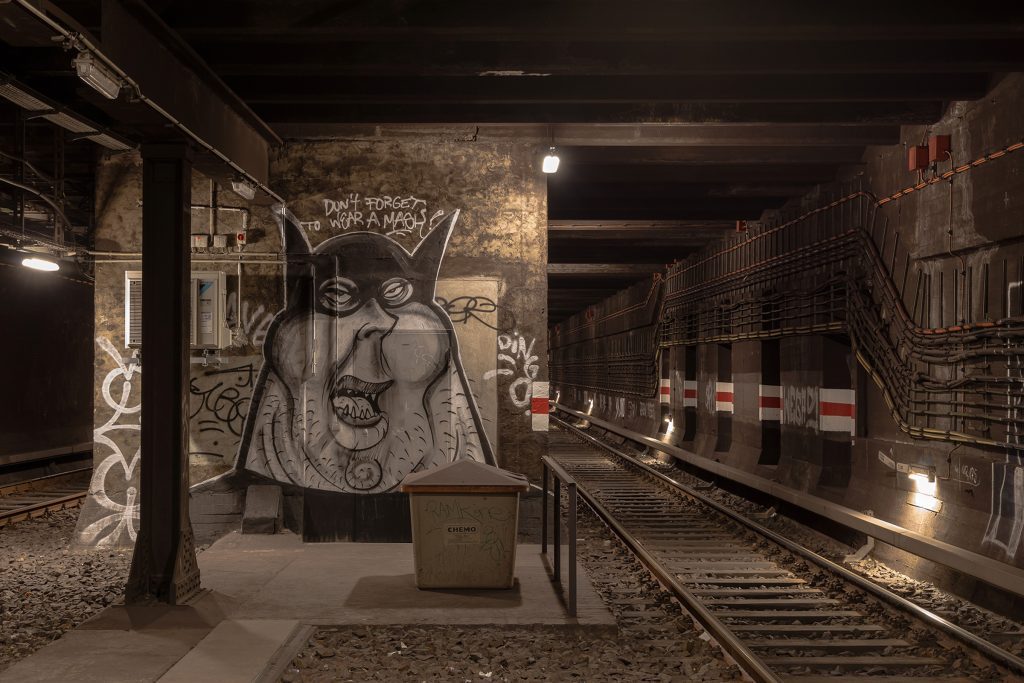
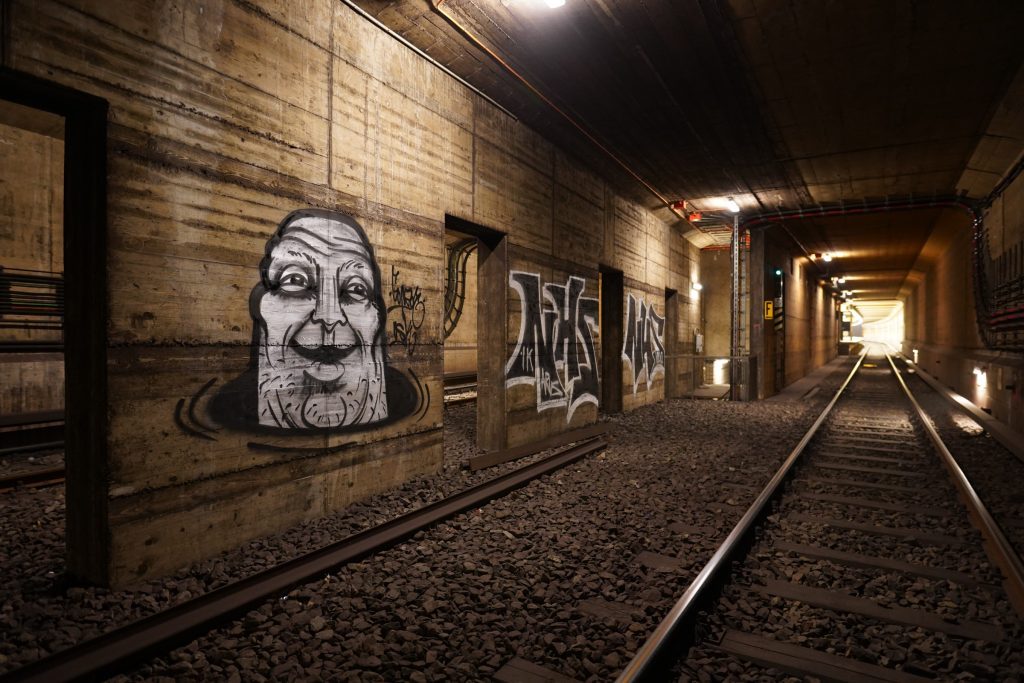
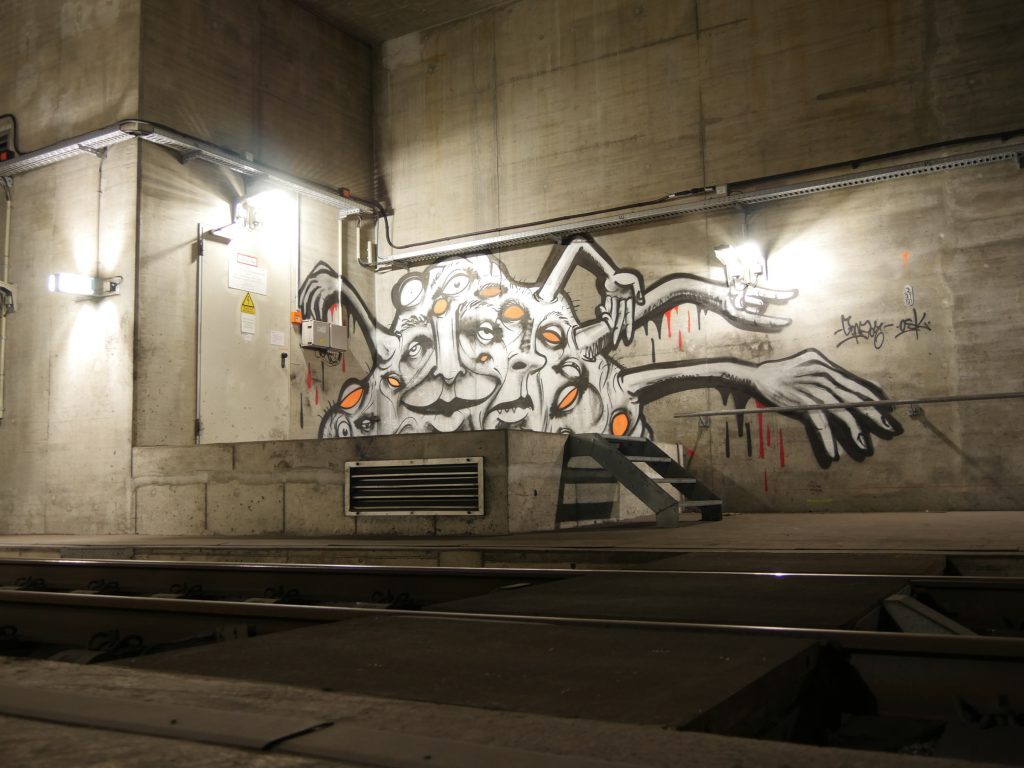
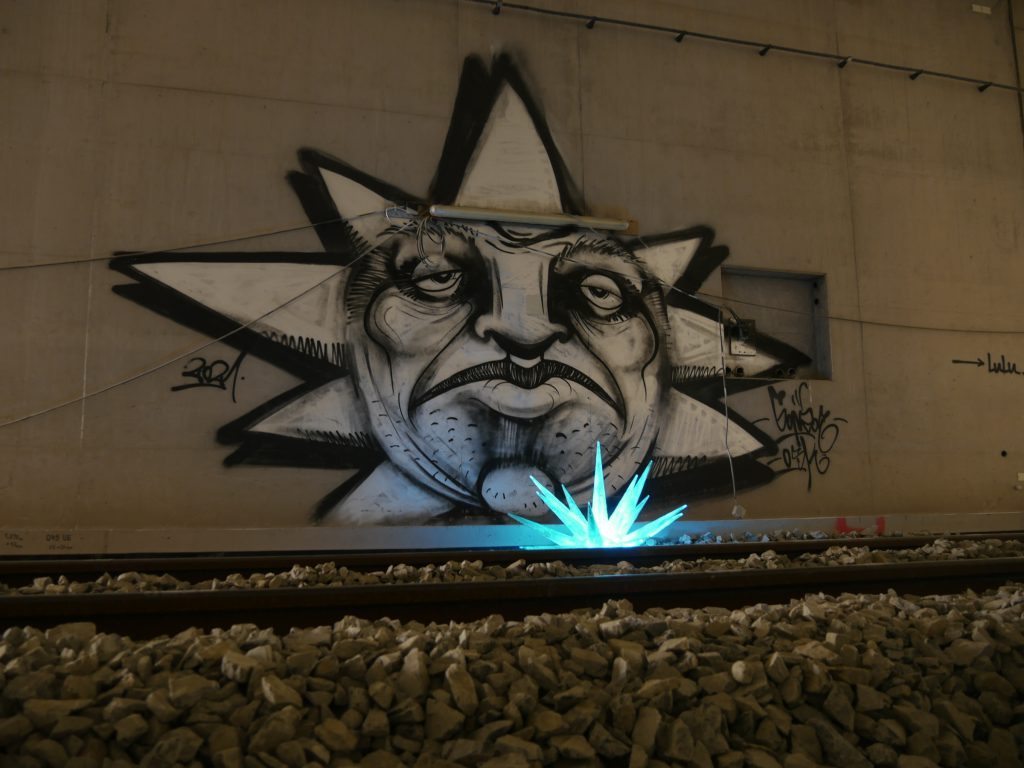
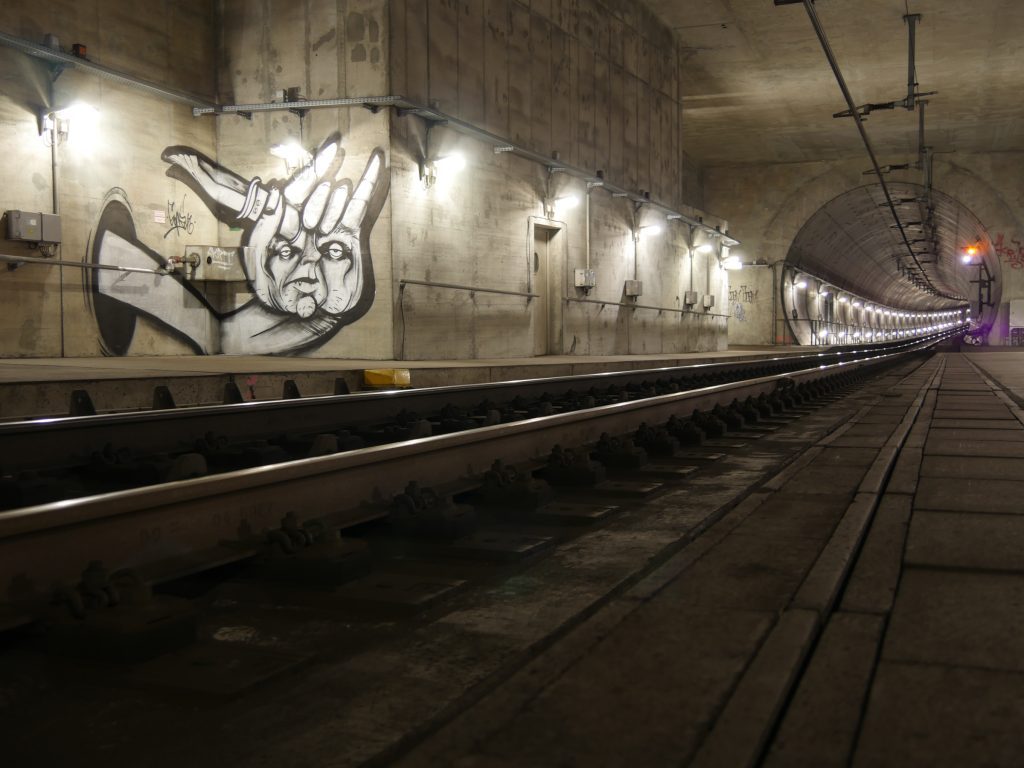
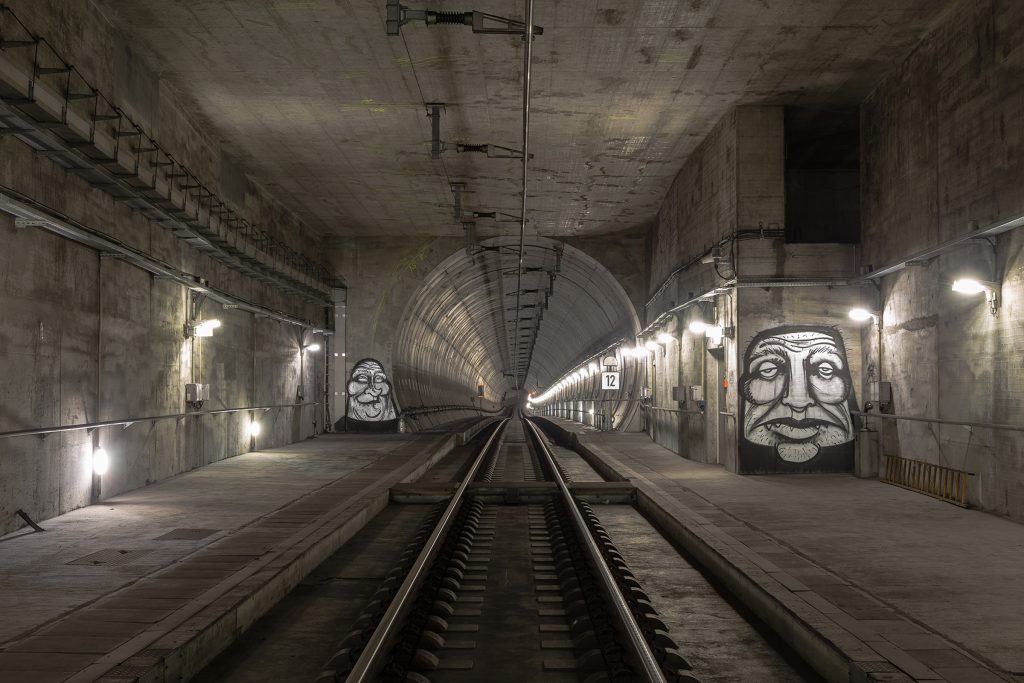
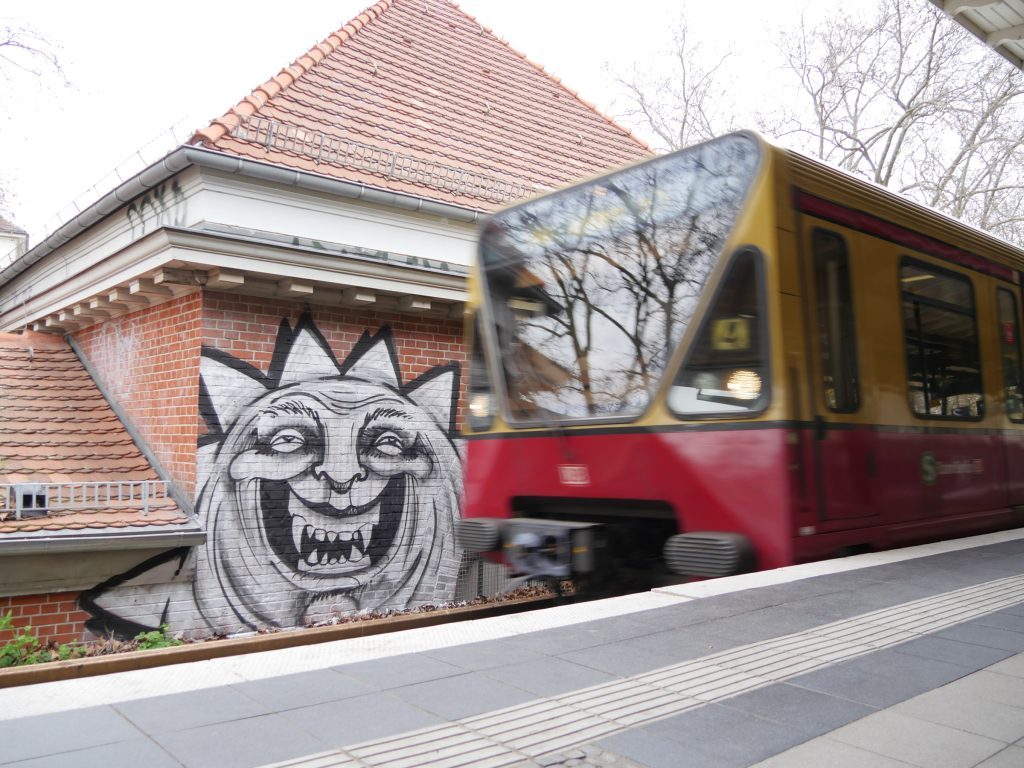
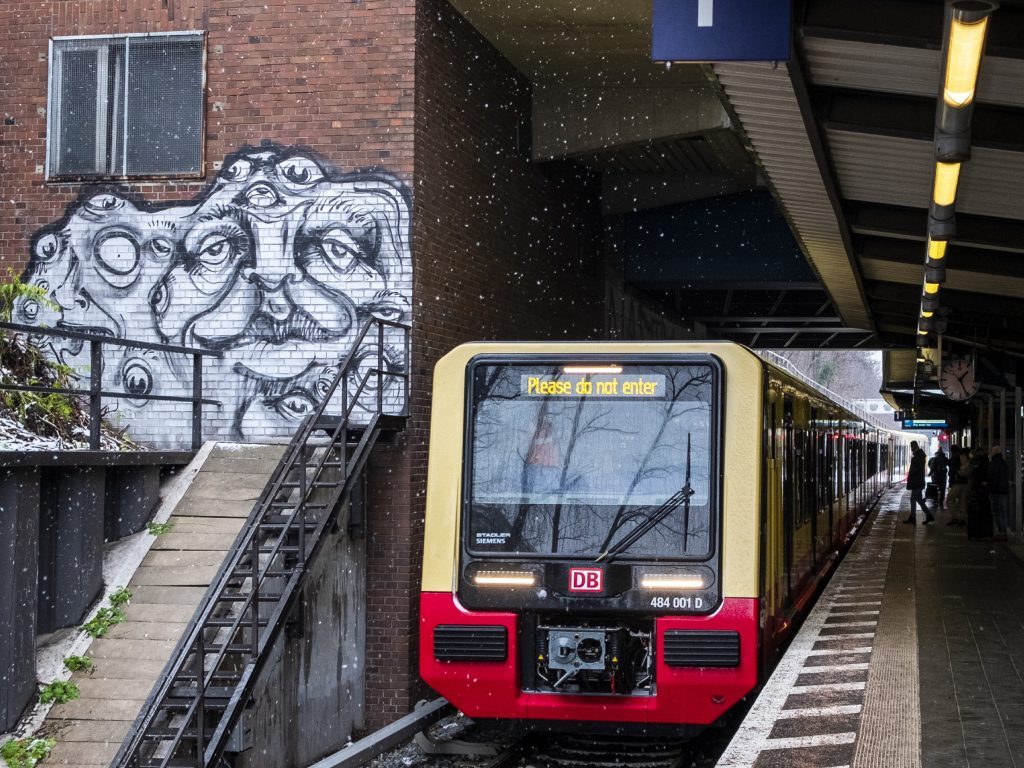
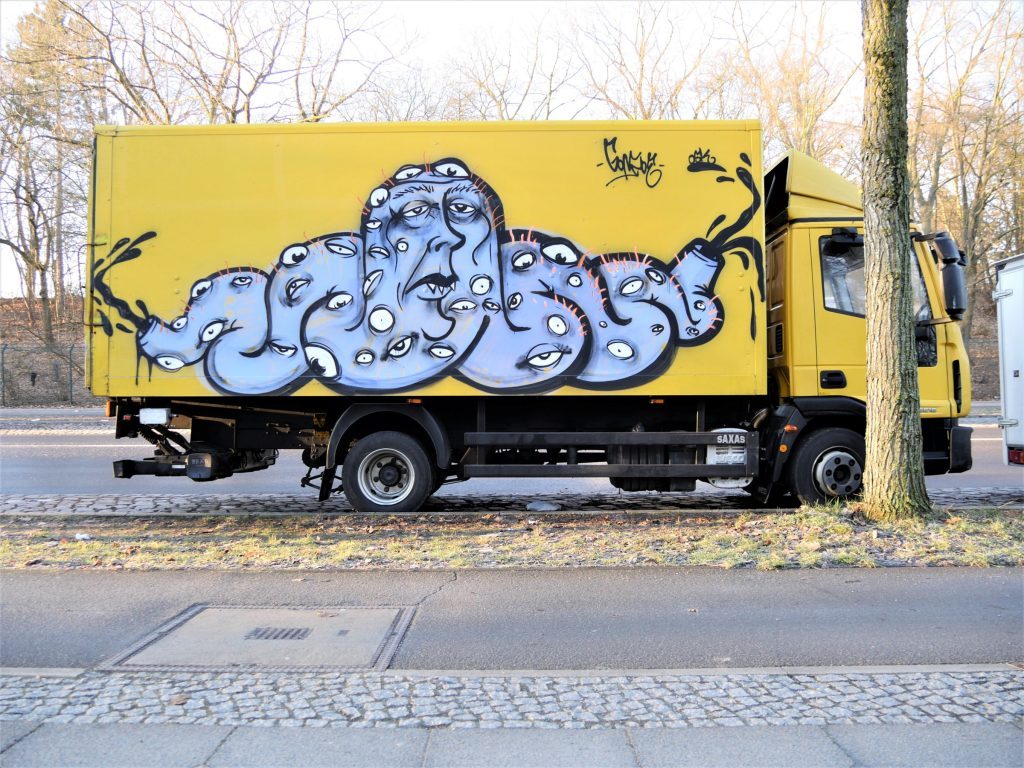
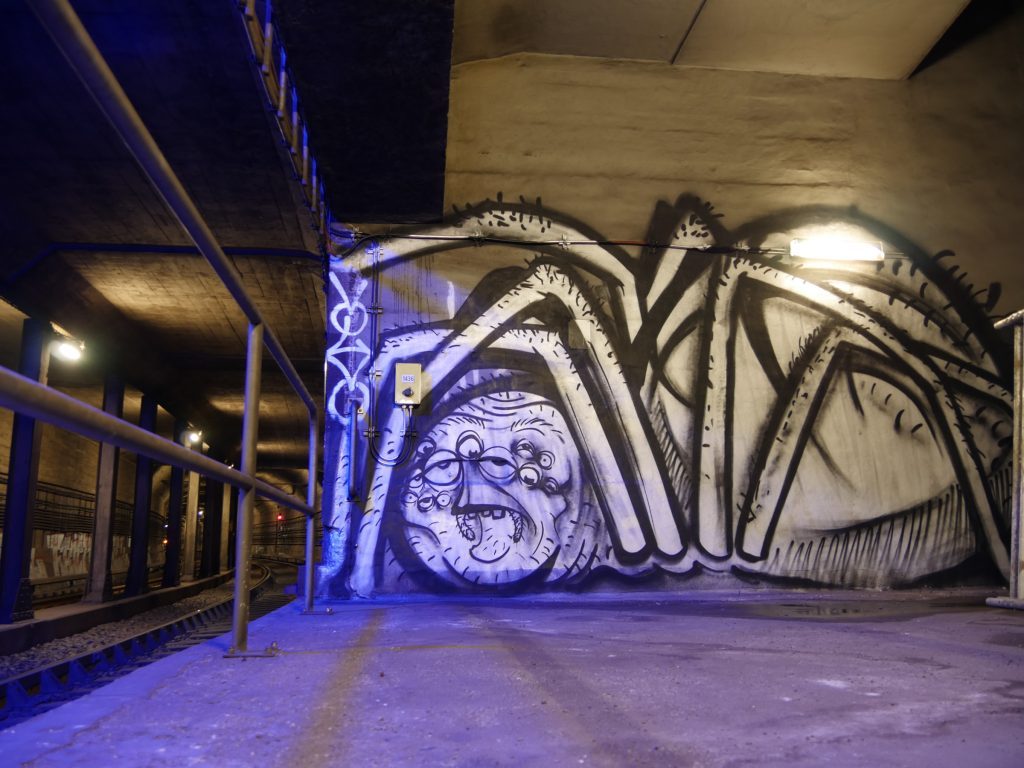
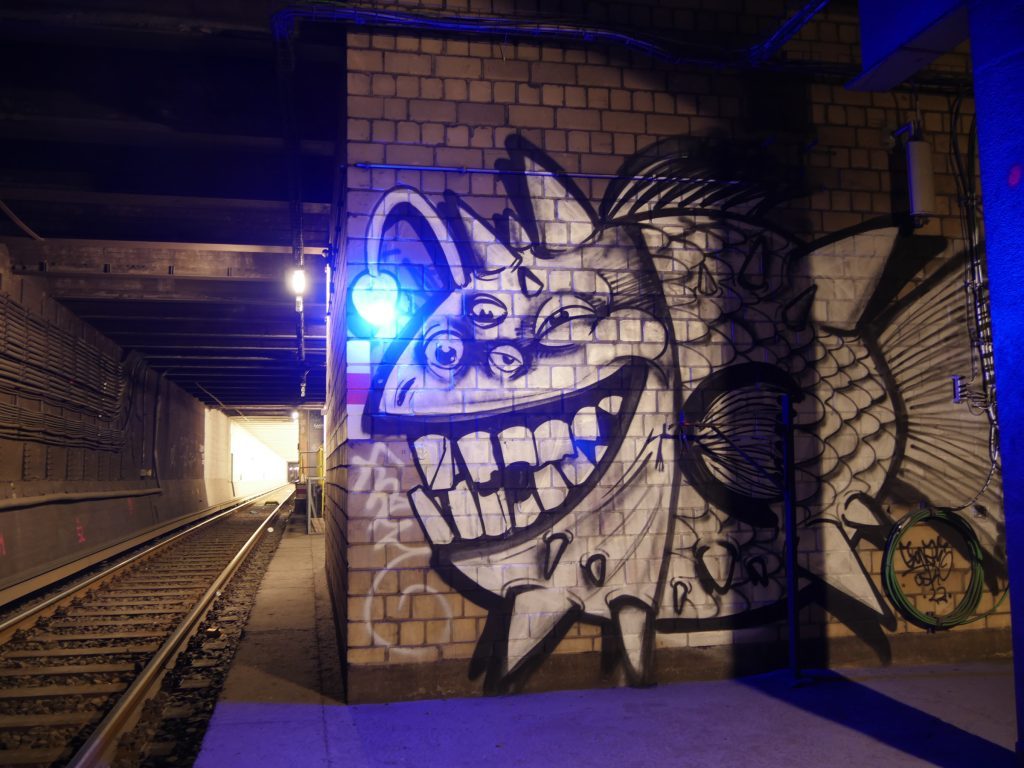
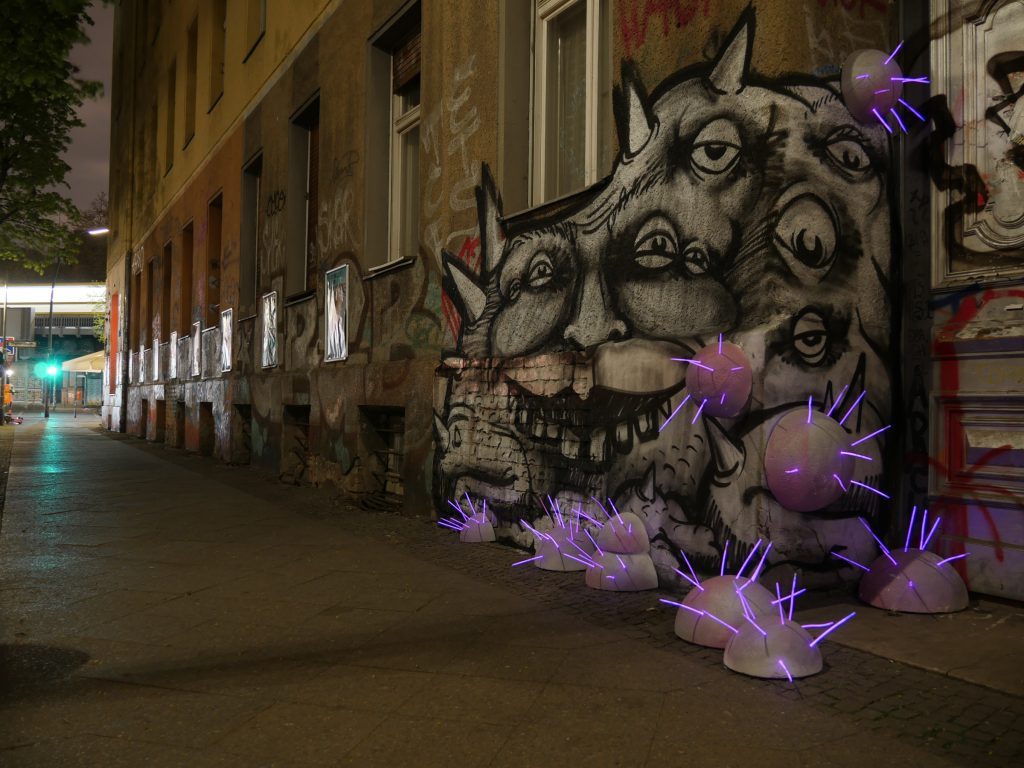
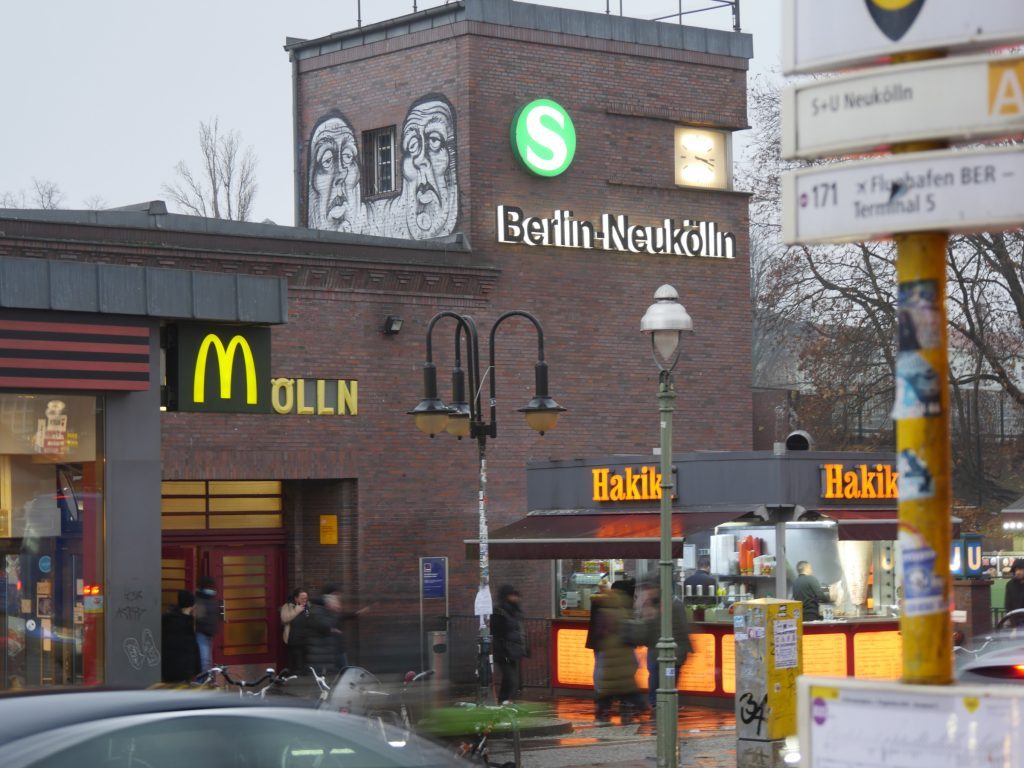
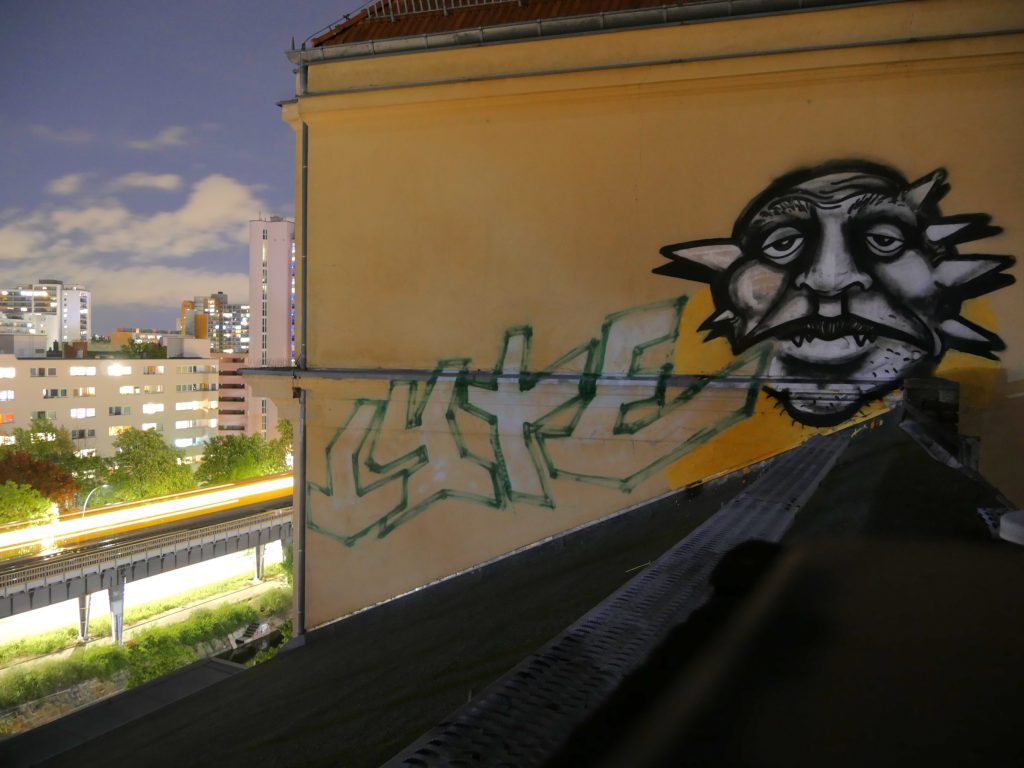
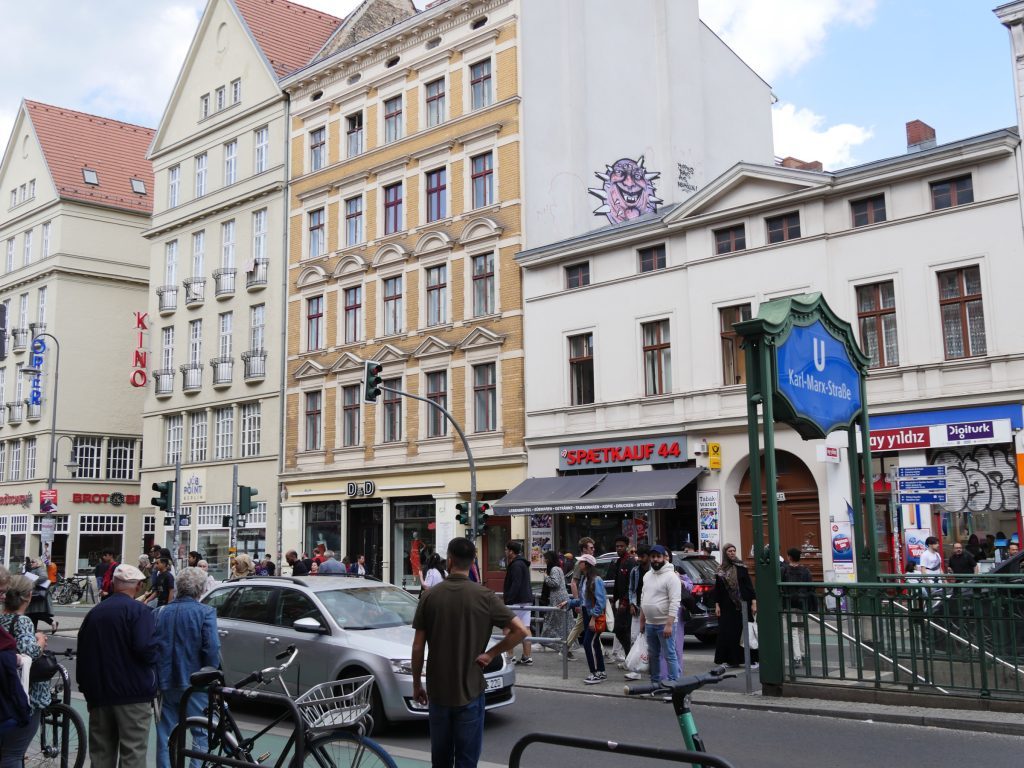
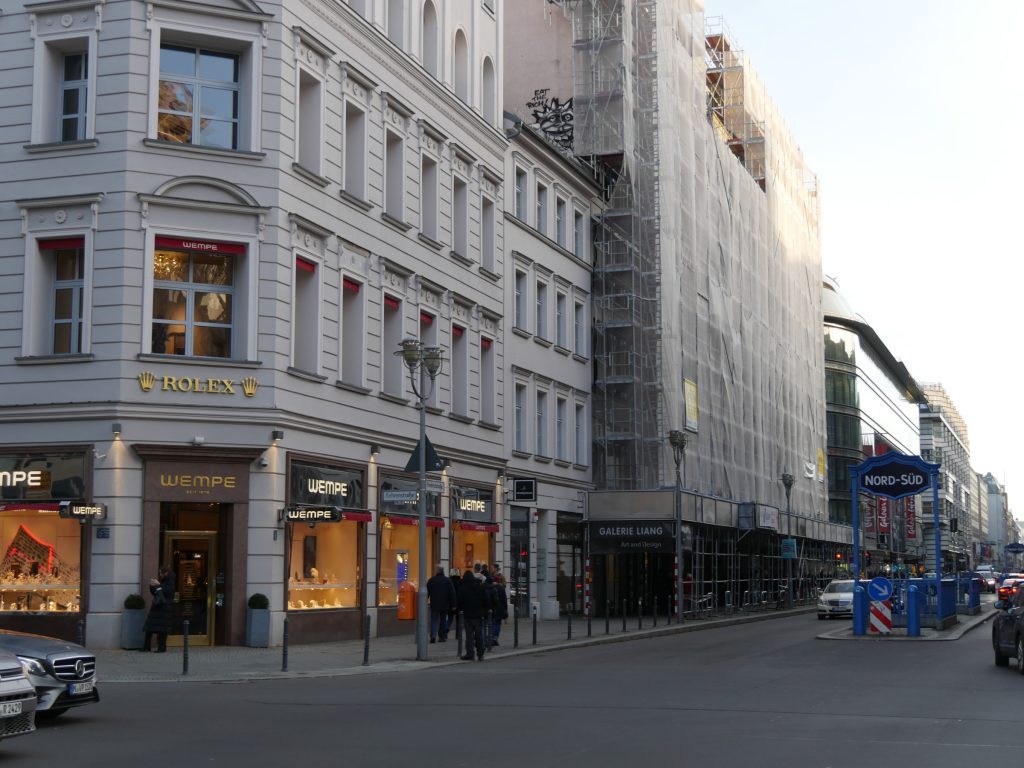
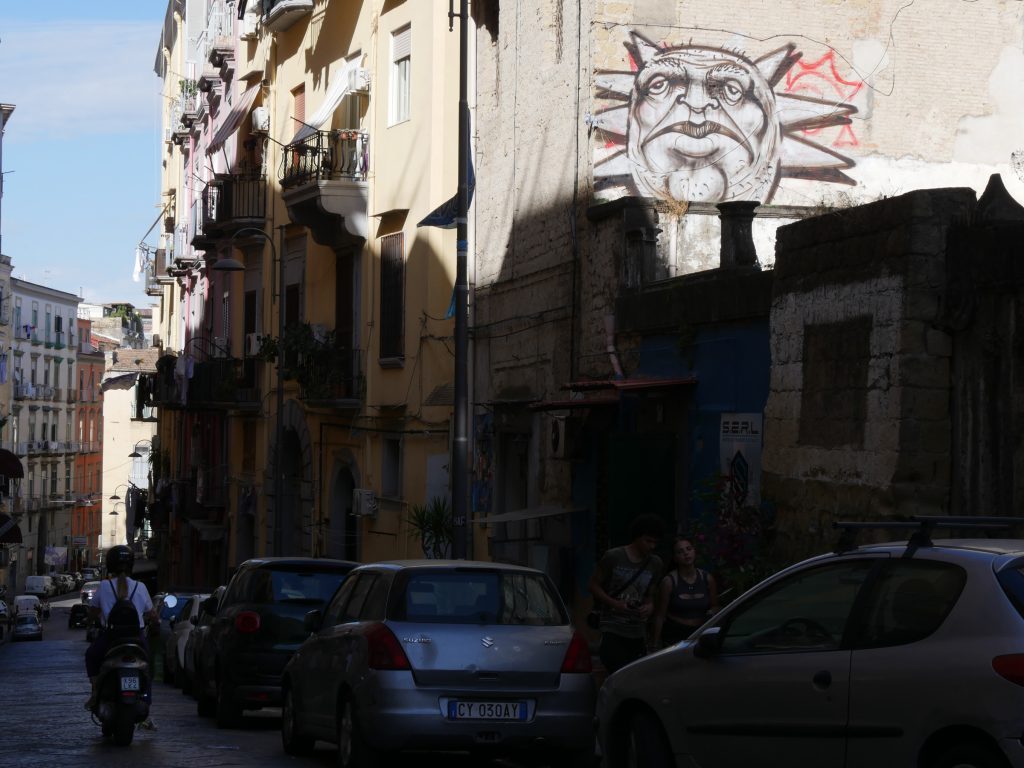
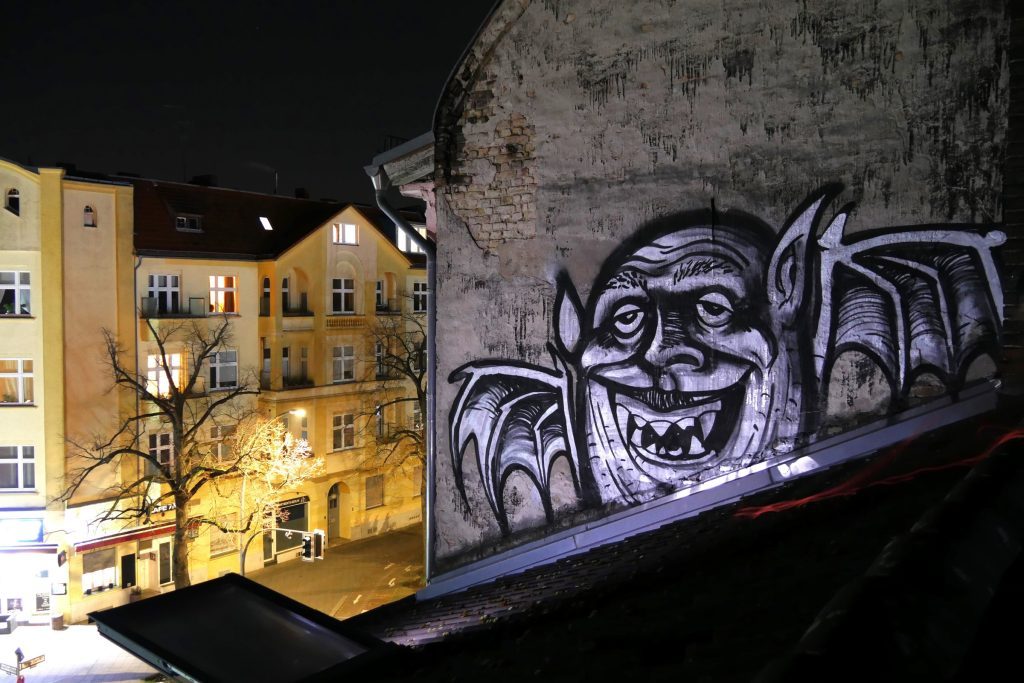
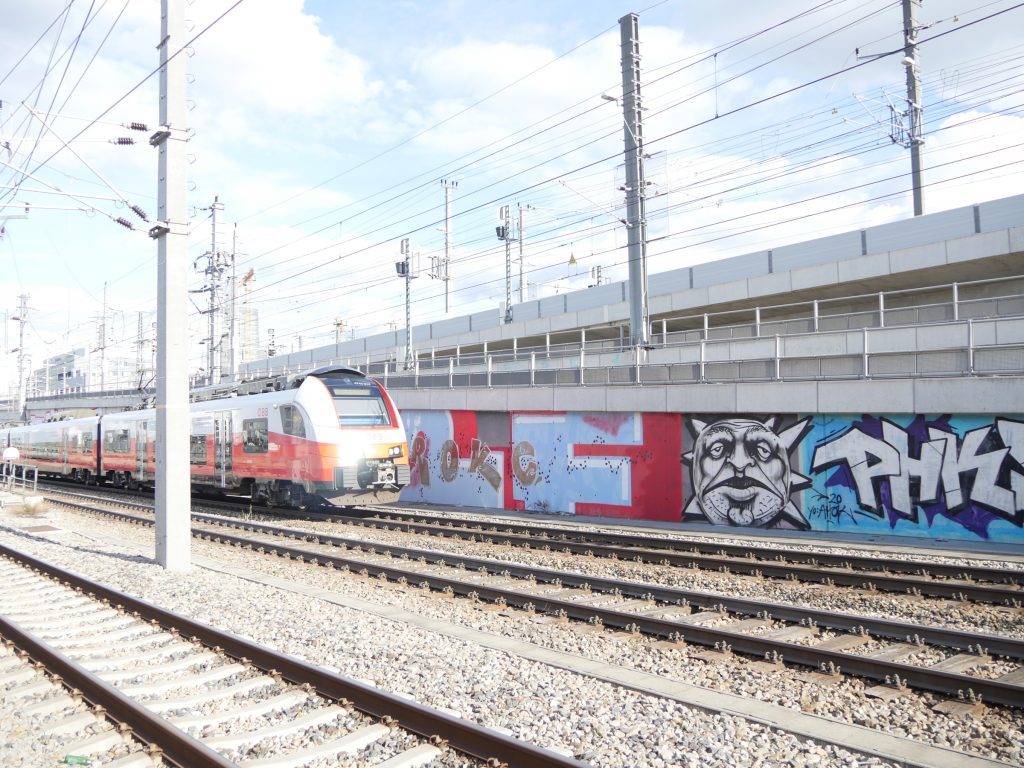
Have the changes in Berlin – including the transformation of urban space – changed the way you work?
The omnipresent displacement processes in Berlin have clearly influenced the radicalism with which I implement my work.
In what way?
The constant disappearance of alternative, non-commercial spaces or people who can no longer afford high rents makes me incredibly sad and angry. I suspect that my willingness to take risks and my desire for more striking locations also increased because I subconsciously wanted to reclaim a piece of this city. That’s probably not particularly constructive and perhaps nothing more than an emotional reaction, but maybe it will motivate others not to just passively accept everything.
You also paint on canvas, make drawings and design tattoos. How long have you been doing studio work?
For some time now, I have been the proud co-tenant of a studio. That has been a little dream of mine for a long time.
And how long have you been tattooing?
Since last year, in 2024.
What keeps you motivated to be active in urban spaces?
Motivation comes and goes. Sometimes there can be a longer break in between. But at some point, a kind of inner urge grows and the search for spots starts again.
Do you ever meet others who paint on your nightly tours?
Never happened.
In recent years, I observed more and more spray-painted characters and figurative works in public space in Berlin, whether they’re giant caterpillars, grimaces, figures or even objects like mobile phones. Have you noticed this too, and do you know some of the artists?
I’ve noticed it, and I really celebrate the fact that others are exploring the possibilities of what can be depicted.
How do you see the development? Are more people active in urban space or fewer than before?
I think Berlin is consistently at the forefront in terms of quantity and quality.
Is there a country or a city where you haven’t painted yet and would like to?
There will be many more trips. South America would be a dream.
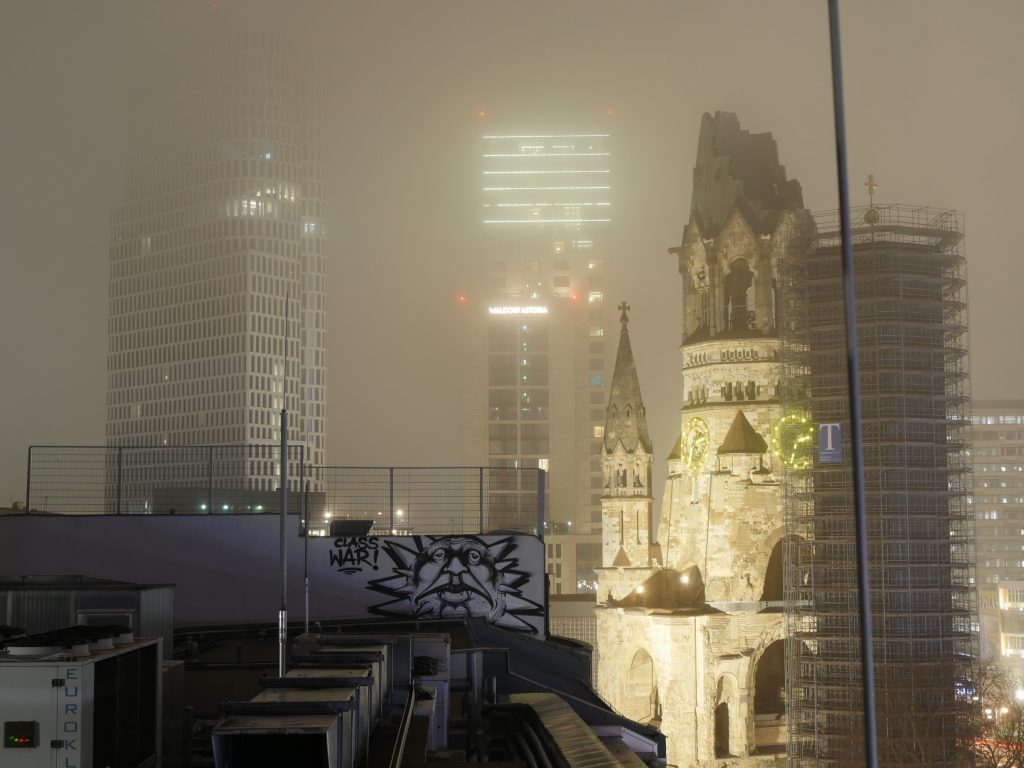
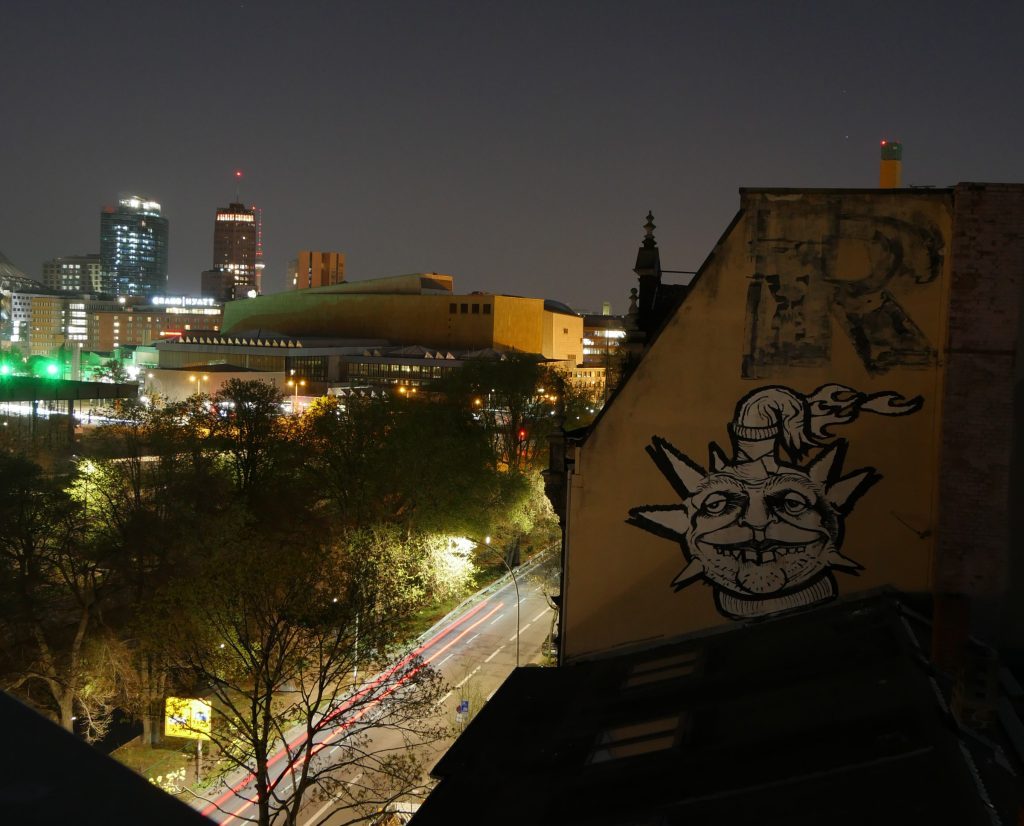
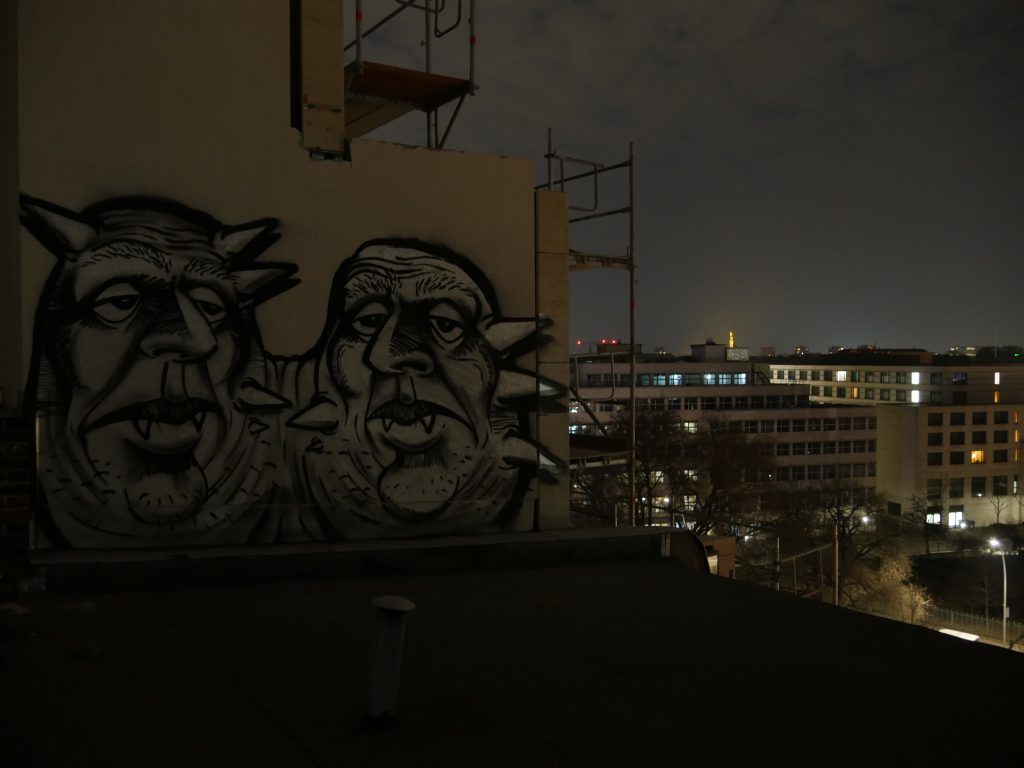
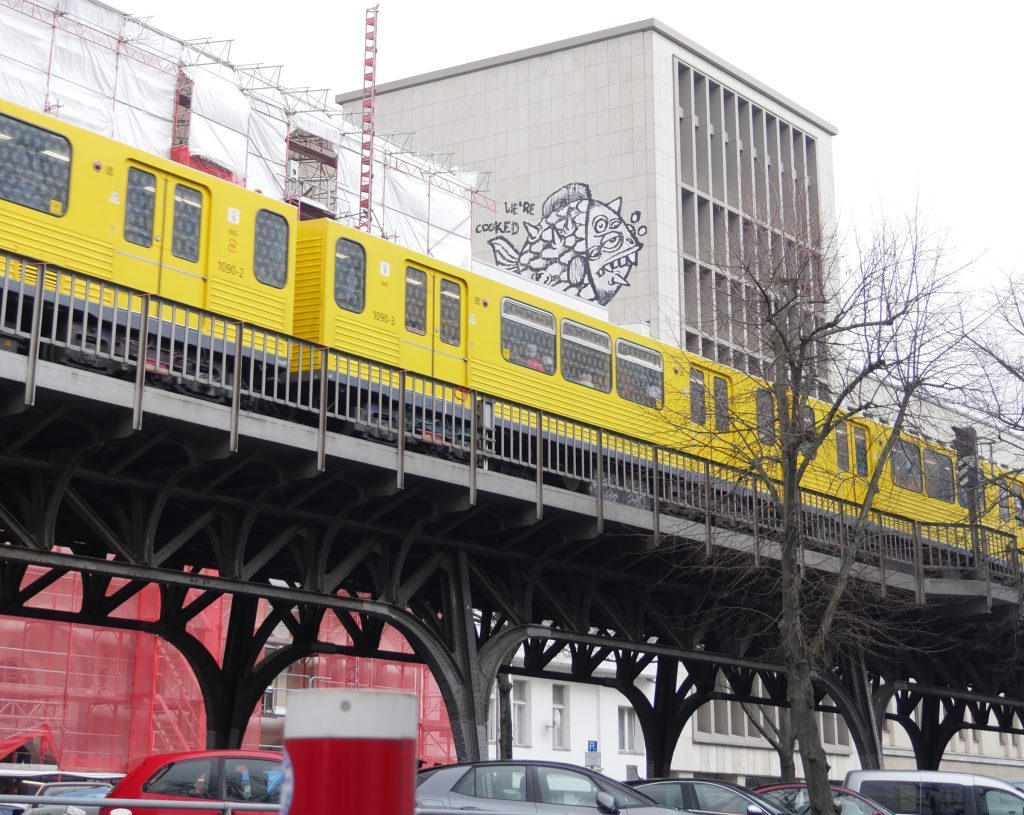
360 views
Categories
Tags:
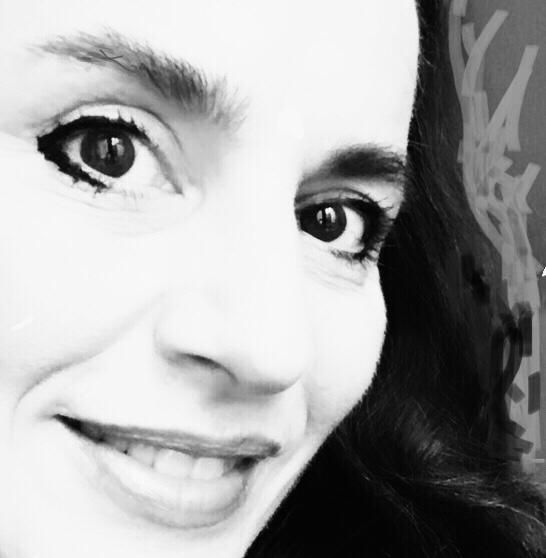
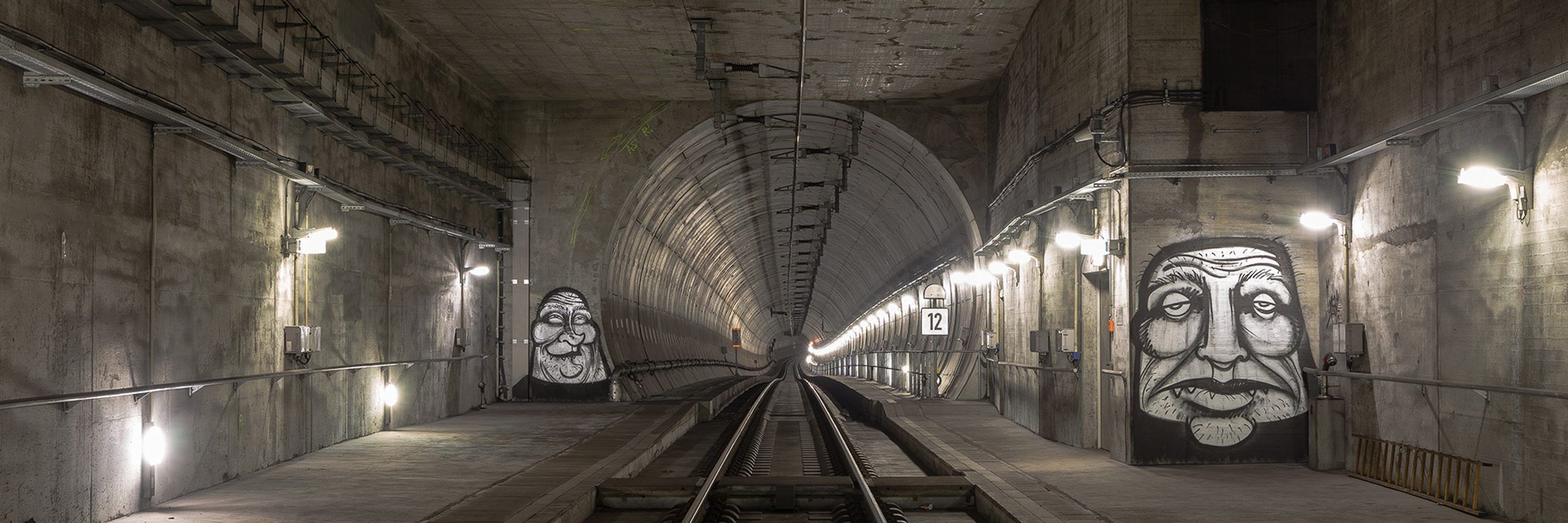
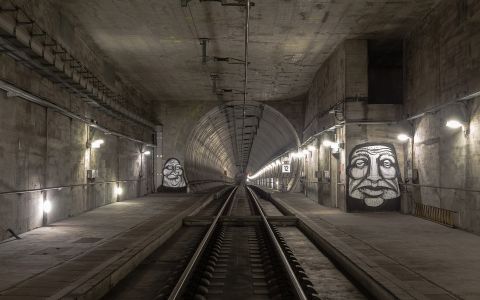
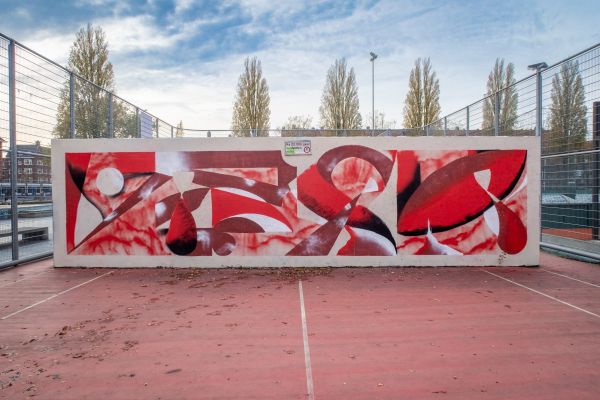
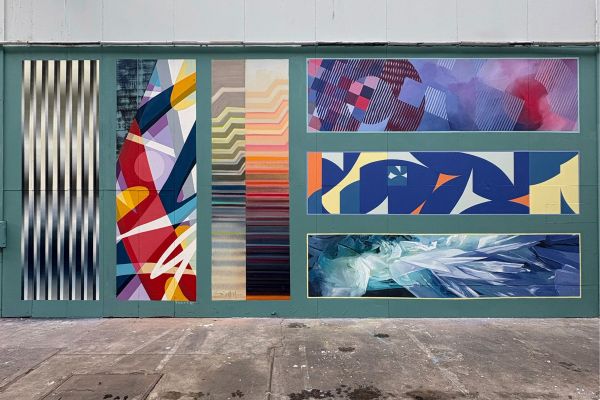
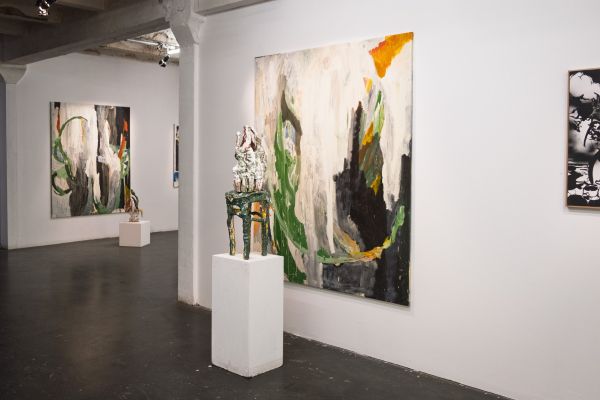
Leave a Reply